337 papers:
 DATE-2015-WangLZ #big data #named
DATE-2015-WangLZ #big data #named- SODA: software defined FPGA based accelerators for big data (CW, XL, XZ), pp. 884–887.
 PODS-2015-PraveenS #graph #how #question
PODS-2015-PraveenS #graph #how #question- Defining Relations on Graphs: How Hard is it in the Presence of Node Partitions? (MP, BS), pp. 159–172.
 PLDI-2015-HathhornER #c
PLDI-2015-HathhornER #c- Defining the undefinedness of C (CH, CE, GR), pp. 336–345.
 FM-2015-NelsonFK #difference #network #program analysis
FM-2015-NelsonFK #difference #network #program analysis- Static Differential Program Analysis for Software-Defined Networks (TN, ADF, SK), pp. 395–413.
 CHI-2015-RadleJSLRR #elicitation #evaluation #interactive
CHI-2015-RadleJSLRR #elicitation #evaluation #interactive- Spatially-aware or Spatially-agnostic?: Elicitation and Evaluation of User-Defined Cross-Device Interactions (RR, HCJ, MS, ZL, HR, YR), pp. 3913–3922.
 CHI-2015-TungHWCLWVC #game studies
CHI-2015-TungHWCLWVC #game studies- User-Defined Game Input for Smart Glasses in Public Space (YCT, CYH, HYW, SC, JWL, PJW, AV, MYC), pp. 3327–3336.
 CSCW-2015-YoungL #research
CSCW-2015-YoungL #research- (Re)defining Land Change Science through Synthetic Research Practices (ALY, WGL), pp. 431–442.
 DUXU-IXD-2015-Farkas #human-computer #user interface
DUXU-IXD-2015-Farkas #human-computer #user interface- Defining HCI/UX Principles for Urban Environment (PF), pp. 346–356.
 HCI-IT-2015-BakaevA #complexity #human-computer #optimisation #user interface
HCI-IT-2015-BakaevA #complexity #human-computer #optimisation #user interface- Defining and Optimizing User Interfaces Information Complexity for AI Methods Application in HCI (MB, TA), pp. 397–405.
 ECMFA-2015-BousseMCB #approach #generative #metamodelling
ECMFA-2015-BousseMCB #approach #generative #metamodelling- A Generative Approach to Define Rich Domain-Specific Trace Metamodels (EB, TM, BC, BB), pp. 45–61.
 ECOOP-2015-DongolDGS #architecture #concurrent #correctness #manycore
ECOOP-2015-DongolDGS #architecture #concurrent #correctness #manycore- Defining Correctness Conditions for Concurrent Objects in Multicore Architectures (BD, JD, LG, GS), pp. 470–494.
 SAC-2015-ArbizaBSGT #internet #middleware #network #refactoring
SAC-2015-ArbizaBSGT #internet #middleware #network #refactoring- Refactoring internet of things middleware through software-defined network (LMRA, LMB, CRPdS, LZG, LMRT), pp. 640–645.
 SAC-2015-DuanZHX #analysis #framework #network #performance
SAC-2015-DuanZHX #analysis #framework #network #performance- Performance analysis for a service delivery platform in software defined network (QD, MZ, JH, CCX), pp. 2257–2262.
 SAC-2015-TroisMBF #network
SAC-2015-TroisMBF #network- From software defined network to network defined for software (CT, MM, LCEDB, MDDF), pp. 665–668.
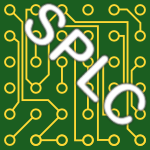 SPLC-2015-ColaLTQ #product line
SPLC-2015-ColaLTQ #product line- An MDE tool for defining software product families with explicit variation points (SDC, KKL, CMT, CQ), pp. 355–360.
 SPLC-2015-ValeAFG #case study #comparative #metric #product line
SPLC-2015-ValeAFG #case study #comparative #metric #product line- Defining metric thresholds for software product lines: a comparative study (GV, DA, EF, AFG), pp. 176–185.
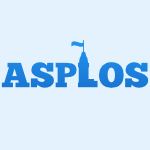 ASPLOS-2015-DhawanHRVCSKPD #architecture #metadata
ASPLOS-2015-DhawanHRVCSKPD #architecture #metadata- Architectural Support for Software-Defined Metadata Processing (UD, CH, RR, NV, SC, JMS, TFKJ, BCP, AD), pp. 487–502.
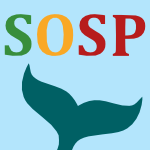 SOSP-2015-BadamCDFHHMMPS
SOSP-2015-BadamCDFHHMMPS- Software defined batteries (AB, RC, JD, AF, SH, PH, JM, TM, BP, EDS), pp. 215–229.
 SOSP-2015-RaychevMM #execution #symbolic computation #using
SOSP-2015-RaychevMM #execution #symbolic computation #using- Parallelizing user-defined aggregations using symbolic execution (VR, MM, TM), pp. 153–167.
 CSL-2015-ClementeL #analysis #automaton #first-order #reachability
CSL-2015-ClementeL #analysis #automaton #first-order #reachability- Reachability Analysis of First-order Definable Pushdown Systems (LC, SL), pp. 244–259.
 CSL-2015-DawarW #finite
CSL-2015-DawarW #finite- A Definability Dichotomy for Finite Valued CSPs (AD, PW), pp. 60–77.
 LICS-2015-CanavoiGLP #fixpoint #logic
LICS-2015-CanavoiGLP #fixpoint #logic- Defining Winning Strategies in Fixed-Point Logic (FC, EG, SL, WP), pp. 366–377.
 SIGMOD-2014-XiongHN #approach #distributed #network #performance #query
SIGMOD-2014-XiongHN #approach #distributed #network #performance #query- A software-defined networking based approach for performance management of analytical queries on distributed data stores (PX, HH, JFN), pp. 955–966.
 VLDB-2014-XiongH #distributed #named #network #performance #query
VLDB-2014-XiongH #distributed #named #network #performance #query- Pronto: A Software-Defined Networking based System for Performance Management of Analytical Queries on Distributed Data Stores (PX, HH), pp. 1661–1664.
 PLDI-2014-BallBGIKSSV #named #network #source code #towards #verification
PLDI-2014-BallBGIKSSV #named #network #source code #towards #verification- VeriCon: towards verifying controller programs in software-defined networks (TB, NB, AG, SI, AK, MS, MS, AV), p. 31.
 PLDI-2014-SousaDVDG #query
PLDI-2014-SousaDVDG #query- Consolidation of queries with user-defined functions (MS, ID, DV, TD, CG), p. 56.
 SAS-2014-BrotherstonG #abduction #safety #termination
SAS-2014-BrotherstonG #abduction #safety #termination- Cyclic Abduction of Inductively Defined Safety and Termination Preconditions (JB, NG), pp. 68–84.
 FM-2014-DerrickDSTTW #consistency #verification
FM-2014-DerrickDSTTW #consistency #verification- Quiescent Consistency: Defining and Verifying Relaxed Linearizability (JD, BD, GS, BT, OT, HW), pp. 200–214.
 CHI-2014-ValdesEGTSMUK #design #gesture #interactive
CHI-2014-ValdesEGTSMUK #design #gesture #interactive- Exploring the design space of gestural interaction with active tokens through user-defined gestures (CV, DE, CG, ST, OS, AM, BU, MK), pp. 4107–4116.
 DHM-2014-GoreW #concept #process
DHM-2014-GoreW #concept #process- A Task Analytic Process to Define Future Concepts in Aviation (BFG, CW), pp. 236–246.
 DUXU-TMT-2014-Bergamo #experience #prototype #user interface
DUXU-TMT-2014-Bergamo #experience #prototype #user interface- User Experience Technique in Computer Digital Arts Production: Paper Prototyping Used as Material to Define Intentionality (MLB), pp. 613–621.
 CAiSE-2014-CarvalhoAG #domain-specific language #ontology #semantics #using
CAiSE-2014-CarvalhoAG #domain-specific language #ontology #semantics #using- Using Reference Domain Ontologies to Define the Real-World Semantics of Domain-Specific Languages (VAdC, JPAA, GG), pp. 488–502.
 ICEIS-v2-2014-CasalinoCMGT #effectiveness
ICEIS-v2-2014-CasalinoCMGT #effectiveness- Defining a Model for Effective e-Government Services and an Inter-organizational Cooperation in Public Sector (NC, MC, MdM, MG, GT), pp. 400–408.
 CIKM-2014-WuLF
CIKM-2014-WuLF- Searching Locally-Defined Entities (ZW, YL, AF), pp. 1499–1508.
 ICPR-2014-MontealegreH #interactive #named #tool support #visual notation
ICPR-2014-MontealegreH #interactive #named #tool support #visual notation- GIST: Graphical Interactive Display Tools Defining a Model for Interactive Search (IM, RMH), pp. 2984–2989.
 SEKE-2014-WuCZX #c++ #empirical #library
SEKE-2014-WuCZX #c++ #empirical #library- An empirical study on the adoption of C++ templates: Library templates versus user defined templates (DW, LC, YZ, BX), pp. 144–149.
 ECMFA-2014-YueA #framework #metric #modelling #quality
ECMFA-2014-YueA #framework #metric #modelling #quality- A MOF-Based Framework for Defining Metrics to Measure the Quality of Models (TY, SA), pp. 213–229.
 SAC-2014-RanaKS #algorithm #evaluation #ranking #social
SAC-2014-RanaKS #algorithm #evaluation #ranking #social- The strength of social strength: an evaluation study of algorithmic versus user-defined ranking (JR, JK, KS), pp. 658–659.
 SAC-2014-ReisIB #syntax
SAC-2014-ReisIB #syntax- Defining the syntax of extensible languages (LVdSR, VODI, RdSB), pp. 1570–1576.
 ASPLOS-2014-OuyangLSHWW #internet #named
ASPLOS-2014-OuyangLSHWW #internet #named- SDF: software-defined flash for web-scale internet storage systems (JO, SL, JS, ZH, YW, YW), pp. 471–484.
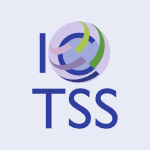 ICTSS-2014-Schmidberger #metric
ICTSS-2014-Schmidberger #metric- Well-Defined Coverage Metrics for the Glass Box Test (RS), pp. 113–128.
 PODS-2013-RudolphK #data access #query
PODS-2013-RudolphK #data access #query- Flag & check: data access with monadically defined queries (SR, MK), pp. 151–162.
 VLDB-2013-TranDSL #nondeterminism
VLDB-2013-TranDSL #nondeterminism- Supporting User-Defined Functions on Uncertain Data (TTLT, YD, CAS, AL), pp. 469–480.
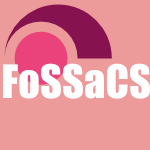 FoSSaCS-2013-CzerwinskiDLM #regular expression
FoSSaCS-2013-CzerwinskiDLM #regular expression- Deciding Definability by Deterministic Regular Expressions (WC, CD, KL, WM), pp. 289–304.
 CHI-2013-NacentaKQK #gesture #set
CHI-2013-NacentaKQK #gesture #set- Memorability of pre-designed and user-defined gesture sets (MAN, YK, YQ, POK), pp. 1099–1108.
 OCSC-2013-WhiteFB #social #social media
OCSC-2013-WhiteFB #social #social media- Social Media: An Ill-Defined Phenomenon (JW, KwF, BB), pp. 422–431.
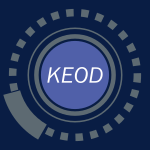 KEOD-2013-NadarajanYC #framework #multi #ontology #performance #scalability #workflow
KEOD-2013-NadarajanYC #framework #multi #ontology #performance #scalability #workflow- Multiple Ontologies Enhanced with Performance Capabilities to Define Interacting Domains within a Workflow Framework for Analysing Large Undersea Videos (GN, CLY, YHCB), pp. 419–426.
 MoDELS-2013-Gonzalez-HuertaIA #approach #architecture #multi #validation
MoDELS-2013-Gonzalez-HuertaIA #approach #architecture #multi #validation- Defining and Validating a Multimodel Approach for Product Architecture Derivation and Improvement (JGH, EI, SA), pp. 388–404.
 MoDELS-2013-Gonzalez-HuertaIA #approach #architecture #multi #validation
MoDELS-2013-Gonzalez-HuertaIA #approach #architecture #multi #validation- Defining and Validating a Multimodel Approach for Product Architecture Derivation and Improvement (JGH, EI, SA), pp. 388–404.
 ESEC-FSE-2013-Tikhonova #domain-specific language #framework #semantics
ESEC-FSE-2013-Tikhonova #domain-specific language #framework #semantics- A framework for defining the dynamic semantics of DSLs (UT), pp. 735–738.
 HPDC-2013-ZhangKWWF #parallel #scalability
HPDC-2013-ZhangKWWF #parallel #scalability- MTC envelope: defining the capability of large scale computers in the context of parallel scripting applications (ZZ, DSK, MW, JMW, ITF), pp. 37–48.
 SOSP-2013-ThereskaBOKRTBZ #architecture #named
SOSP-2013-ThereskaBOKRTBZ #architecture #named- IOFlow: a software-defined storage architecture (ET, HB, GO, TK, AITR, TT, RB, TZ), pp. 182–196.
 CSL-2013-ColcombetKLB #automaton
CSL-2013-ColcombetKLB #automaton- Deciding the weak definability of Büchi definable tree languages (TC, DK, CL, MVB), pp. 215–230.
 LICS-2013-AlurDT #higher-order #monad #string #transducer
LICS-2013-AlurDT #higher-order #monad #string #transducer- From Monadic Second-Order Definable String Transformations to Transducers (RA, ADG, AT), pp. 458–467.
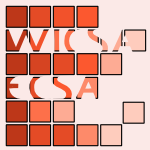 WICSA-ECSA-2012-ThatSO #design pattern #using
WICSA-ECSA-2012-ThatSO #design pattern #using- Using Architectural Patterns to Define Architectural Decisions (MTTT, SS, FO), pp. 196–200.
 CASE-2012-YamamotoD #interface #learning
CASE-2012-YamamotoD #interface #learning- Robot interface learning user-defined voice instructions (DY, MD), pp. 926–929.
 VLDB-2012-Jacques-SilvaGWWK #adaptation #runtime
VLDB-2012-Jacques-SilvaGWWK #adaptation #runtime- Building User-defined Runtime Adaptation Routines for Stream Processing Applications (GJS, BG, RW, KLW, VK), pp. 1826–1837.
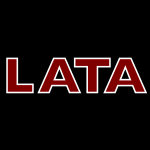 LATA-2012-BarashO #context-free grammar
LATA-2012-BarashO #context-free grammar- Defining Contexts in Context-Free Grammars (MB, AO), pp. 106–118.
 ICEIS-v2-2012-BoudabousSB #ontology #semantics #towards
ICEIS-v2-2012-BoudabousSB #ontology #semantics #towards- Towards an Arabic Ontology — Defining Morpho-lexical Patterns for Semantic Relation Extraction (MMB, FS, LHB), pp. 342–348.
 CIKM-2012-StuparM #query
CIKM-2012-StuparM #query- Being picky: processing top-k queries with set-defined selections (AS, SM), pp. 912–921.
 SEKE-2012-CorreaSSA #modelling #rest #testing #uml #web #web service
SEKE-2012-CorreaSSA #modelling #rest #testing #uml #web #web service- Defining RESTful Web Services Test Cases from UML Models (ALC, TSdS, EAS, AJA), pp. 319–323.
 SEKE-2012-RiveroC #usability #using #web
SEKE-2012-RiveroC #usability #using #web- Using the Results from a Systematic Mapping Extension to Define a Usability Inspection Method for Web Applications (LR, TC), pp. 582–587.
 MoDELS-2012-CombemaleTB #infinity #modelling
MoDELS-2012-CombemaleTB #infinity #modelling- Formally Defining and Iterating Infinite Models (BC, XT, BB), pp. 119–133.
 MoDELS-2012-CombemaleTB #infinity #modelling
MoDELS-2012-CombemaleTB #infinity #modelling- Formally Defining and Iterating Infinite Models (BC, XT, BB), pp. 119–133.
 POPL-2012-RayL #injection
POPL-2012-RayL #injection- Defining code-injection attacks (DR, JL), pp. 179–190.
 SAC-2012-ChhelLGS #biology #multi #using
SAC-2012-ChhelLGS #biology #multi #using- Minimum multiple characterization of biological data using partially defined boolean formulas (FC, FL, AG, FS), pp. 1399–1405.
 SAC-2012-TangJ #analysis #precise
SAC-2012-TangJ #analysis #precise- Exploiting regularity of user-defined types to improve precision of program analyses (XT, JJ), pp. 1743–1750.
 CSL-2012-DawarGHKP #equation #linear
CSL-2012-DawarGHKP #equation #linear- Definability of linear equation systems over groups and rings (AD, EG, BH, EK, WP), pp. 213–227.
 CSL-2012-KotekM #graph #matrix #parametricity
CSL-2012-KotekM #graph #matrix #parametricity- Connection Matrices and the Definability of Graph Parameters (TK, JAM), pp. 411–425.
 CSL-2012-Makowsky #complexity #graph #parametricity
CSL-2012-Makowsky #complexity #graph #parametricity- Definability and Complexity of Graph Parameters (Invited Talk) (JAM), pp. 14–15.
 LICS-2012-KrebsS #first-order
LICS-2012-KrebsS #first-order- Non-definability of Languages by Generalized First-order Formulas over (N, +) (AK, AVS), pp. 451–460.
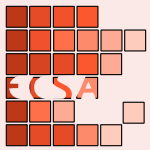 ECSA-2011-TekinerdoganS #architecture #quality
ECSA-2011-TekinerdoganS #architecture #quality- Defining Architectural Viewpoints for Quality Concerns (BT, HS), pp. 26–34.
 FoSSaCS-2011-SchwinghammerBS #metric #recursion
FoSSaCS-2011-SchwinghammerBS #metric #recursion- A Step-Indexed Kripke Model of Hidden State via Recursive Properties on Recursively Defined Metric Spaces (JS, LB, KS), pp. 305–319.
 ICALP-v2-2011-AndersonMSS #first-order #invariant #locality #logic #query
ICALP-v2-2011-AndersonMSS #first-order #invariant #locality #logic #query- Locality of Queries Definable in Invariant First-Order Logic with Arbitrary Built-in Predicates (MA, DvM, NS, LS), pp. 368–379.
 CEFP-2011-PlasmeijerALM #multi #web
CEFP-2011-PlasmeijerALM #multi #web- Defining Multi-user Web Applications with iTasks (RP, PA, BL, SM), pp. 46–92.
 CHI-2011-RuizLL #gesture #interactive #mobile
CHI-2011-RuizLL #gesture #interactive #mobile- User-defined motion gestures for mobile interaction (JR, YL, EL), pp. 197–206.
 CSCW-2011-KamranC #collaboration #ontology #social #social media #using
CSCW-2011-KamranC #collaboration #ontology #social #social media #using- Defining ontology by using users collaboration on social media (SK, FC), pp. 657–660.
 CIKM-2011-GamperBCI #multimodal #network
CIKM-2011-GamperBCI #multimodal #network- Defining isochrones in multimodal spatial networks (JG, MHB, WC, MI), pp. 2381–2384.
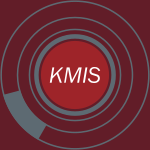 KMIS-2011-FortierS #modelling #process #requirements #using
KMIS-2011-FortierS #modelling #process #requirements #using- Defining Information Requirements — Using Business Process Modeling for Incident Response for Chemical Facilities (SCF, GLS), pp. 411–417.
 SEKE-2011-FaureFHUV #execution #ubiquitous
SEKE-2011-FaureFHUV #execution #ubiquitous- User-defined Scenarios in Ubiquitous Environments: Creation, Execution Control and Sharing (MF, LF, MH, CU, SV), pp. 302–307.
 MoDELS-2011-Chimiak-Opoka #framework #metric #modelling #ocl #uml #using
MoDELS-2011-Chimiak-Opoka #framework #metric #modelling #ocl #uml #using- Measuring UML Models Using Metrics Defined in OCL within the SQUAM Framework (JCO), pp. 47–61.
 MoDELS-2011-CuccuruGT
MoDELS-2011-CuccuruGT- Defining MARTE’s VSL as an Extension of Alf (AC, SG, FT), pp. 699–713.
 MoDELS-2011-Chimiak-Opoka #framework #metric #modelling #ocl #uml #using
MoDELS-2011-Chimiak-Opoka #framework #metric #modelling #ocl #uml #using- Measuring UML Models Using Metrics Defined in OCL within the SQUAM Framework (JCO), pp. 47–61.
 MoDELS-2011-CuccuruGT
MoDELS-2011-CuccuruGT- Defining MARTE’s VSL as an Extension of Alf (AC, SG, FT), pp. 699–713.
 GPCE-2011-LindemanKV #domain-specific language
GPCE-2011-LindemanKV #domain-specific language- Declaratively defining domain-specific language debuggers (RTL, LCLK, EV), pp. 127–136.
 ESEC-FSE-2011-Bodden #approach #monitoring #runtime
ESEC-FSE-2011-Bodden #approach #monitoring #runtime- Stateful breakpoints: a practical approach to defining parameterized runtime monitors (EB), pp. 492–495.
 CSL-2011-Eickmeyer #first-order #logic #random
CSL-2011-Eickmeyer #first-order #logic #random- Non-Definability Results for Randomised First-Order Logic (KE), pp. 218–232.
 LICS-2011-BodirskyPT #decidability
LICS-2011-BodirskyPT #decidability- Decidability of Definability (MB, MP, TT), pp. 321–328.
 DATE-2010-Fettweis #energy
DATE-2010-Fettweis #energy- The road to energy-efficient systems: From hardware-driven to software-defined (GF), p. 477.
 GT-VMT-2010-HoffmannM #graph grammar #metamodelling #modelling
GT-VMT-2010-HoffmannM #graph grammar #metamodelling #modelling- Defining Models — Meta Models versus Graph Grammars (BH, MM).
 ICEIS-DISI-2010-DiboB #architecture #component #deployment #distributed #metamodelling #modelling
ICEIS-DISI-2010-DiboB #architecture #component #deployment #distributed #metamodelling #modelling- Defining an Unified Meta Modeling Architecture for Deployment of Distributed Components-based Software Applications (MD, NB), pp. 316–321.
 ICEIS-ISAS-2010-DohringKGZ #architecture #challenge #convergence #workflow
ICEIS-ISAS-2010-DohringKGZ #architecture #challenge #convergence #workflow- The Convergence of Workflows, Business Rules and Complex Events — Defining a Reference Architecture and Approaching Realization Challenges (MD, LK, EG, BZ), pp. 338–343.
 KEOD-2010-ValienteRV #modelling #owl #semantics #using
KEOD-2010-ValienteRV #modelling #owl #semantics #using- Defining the Semantics of It Service Management Models using OWL and SWRL (MCV, DR, CVC), pp. 378–381.
 RecSys-2010-LeeB #collaboration #process #recommendation #self #using
RecSys-2010-LeeB #collaboration #process #recommendation #self #using- Using self-defined group activities for improvingrecommendations in collaborative tagging systems (DHL, PB), pp. 221–224.
 SEKE-2010-WangPACC #analysis #automation #process
SEKE-2010-WangPACC #analysis #automation #process- An Automatic Failure Mode and Effect Analysis Technique for Processes Defined in the Little-JIL Process Definition Language (DW, JP, GSA, LAC, BC), pp. 765–770.
 SAC-2010-WeinreichB #architecture #development
SAC-2010-WeinreichB #architecture #development- Paving the road for formally defined architecture description in software development (RW, GB), pp. 2337–2343.
 SPLC-2010-TekinerdoganTS #approach #classification #multi #product line
SPLC-2010-TekinerdoganTS #approach #classification #multi #product line- Multidimensional Classification Approach for Defining Product Line Engineering Transition Strategies (BT, ET, ES), pp. 461–465.
 CSL-2010-Gradel #game studies
CSL-2010-Gradel #game studies- Definability in Games (EG), pp. 19–21.
 LICS-2010-Grohe #fixpoint #graph #polynomial
LICS-2010-Grohe #fixpoint #graph #polynomial- Fixed-Point Definability and Polynomial Time on Graphs with Excluded Minors (MG), pp. 179–188.
 LICS-2010-PlaceS #xpath
LICS-2010-PlaceS #xpath- Deciding Definability in FO2(<) (or XPath) on Trees (TP, LS), pp. 253–262.
 WICSA-ECSA-2009-AriasAA #execution #scalability
WICSA-ECSA-2009-AriasAA #execution #scalability- Defining execution viewpoints for a large and complex software-intensive system (TBCA, PA, PA), pp. 1–10.
 DAC-2009-HelinskiAP #physics #using
DAC-2009-HelinskiAP #physics #using- A physical unclonable function defined using power distribution system equivalent resistance variations (RH, DA, JP), pp. 676–681.
 DATE-2009-LiRJ #architecture
DATE-2009-LiRJ #architecture- An architecture for secure software defined radio (CL, AR, NKJ), pp. 448–453.
 VLDB-2009-FriedmanPC #approach #named #pipes and filters #polymorphism #self #sql
VLDB-2009-FriedmanPC #approach #named #pipes and filters #polymorphism #self #sql- SQL/MapReduce: A practical approach to self-describing, polymorphic, and parallelizable user-defined functions (EF, PMP, JC), pp. 1402–1413.
 FoSSaCS-2009-AlurDMW #on the
FoSSaCS-2009-AlurDMW #on the- On ω-Languages Defined by Mean-Payoff Conditions (RA, AD, OM, GW), pp. 333–347.
 SAS-2009-XiaFL #data flow
SAS-2009-XiaFL #data flow- Inferring Dataflow Properties of User Defined Table Processors (SX, MF, FL), pp. 19–35.
 DLT-2009-BehleKR #quantifier #regular expression
DLT-2009-BehleKR #quantifier #regular expression- Regular Languages Definable by Majority Quantifiers with Two Variables (CB, AK, SR), pp. 91–102.
 DLT-2009-KudinovS #order #word
DLT-2009-KudinovS #order #word- Definability in the Infix Order on Words (OVK, VLS), pp. 454–465.
 ICALP-v2-2009-BrancoP #equation #polynomial #regular expression
ICALP-v2-2009-BrancoP #equation #polynomial #regular expression- Equations Defining the Polynomial Closure of a Lattice of Regular Languages (MJJB, JÉP), pp. 115–126.
 CEFP-2009-KoopmanPA #consistency #effectiveness #semantics
CEFP-2009-KoopmanPA #consistency #effectiveness #semantics- An Effective Methodology for Defining Consistent Semantics of Complex Systems (PWMK, RP, PA), pp. 224–267.
 CHI-2009-LawRHVK #approach #bibliography #comprehension #experience #user interface
CHI-2009-LawRHVK #approach #bibliography #comprehension #experience #user interface- Understanding, scoping and defining user experience: a survey approach (ELCL, VR, MH, APOSV, JK), pp. 719–728.
 CHI-2009-WobbrockMW #gesture
CHI-2009-WobbrockMW #gesture- User-defined gestures for surface computing (JOW, MRM, ADW), pp. 1083–1092.
 HCD-2009-ProppF #behaviour #testing #usability
HCD-2009-ProppF #behaviour #testing #usability- Defining Expected Behavior for Usability Testing (SP, PF), pp. 110–119.
 HCI-AUII-2009-HamaguchiKDI #framework
HCI-AUII-2009-HamaguchiKDI #framework- User-Definable Rule Description Framework for Autonomous Actor Agents (NH, HK, MD, SI), pp. 257–266.
 HIMI-II-2009-IbrahimN #design #online #quote #web
HIMI-II-2009-IbrahimN #design #online #quote #web- “Online Legitimacy”: Defining Institutional Symbolisms for the Design of Information Artifact in the Web Mediated Information Environment (W-MIE) (ENMI, NLMN), pp. 65–73.
 CAiSE-2009-MaoBPF #automation #generative #using
CAiSE-2009-MaoBPF #automation #generative #using- Defining and Using Schematic Correspondences for Automatically Generating Schema Mappings (LM, KB, NWP, AAAF), pp. 79–93.
 ICEIS-HCI-2009-BrisaboaCLS #documentation #process #workflow
ICEIS-HCI-2009-BrisaboaCLS #documentation #process #workflow- Defining a Workflow Process for Textual and Geographic Indexing of Documents (NRB, ACP, MRL, DS), pp. 78–83.
 ICEIS-J-2009-LimaLO
ICEIS-J-2009-LimaLO- Evaluating the Accessibility of Websites to Define Indicators in Service Level Agreements (STdL, FL, KMdO), pp. 858–869.
 SEKE-2009-BarbosaB #elicitation #process #requirements #towards
SEKE-2009-BarbosaB #elicitation #process #requirements #towards- Towards the Selection of the Most Suitable Elicitation Technique Through a Defined Requirements Elicitation Process (MWB, GARB), pp. 33–36.
 SEKE-2009-HamouiHUV #component #specification
SEKE-2009-HamouiHUV #component #specification- Specification of a Component-based Domotic System to Support User-defined Scenarios (FH, MH, CU, SV), pp. 597–602.
 OOPSLA-2009-Riehle #design pattern
OOPSLA-2009-Riehle #design pattern- Design pattern density defined (DR), pp. 469–480.
 TOOLS-EUROPE-2009-SadilekW #grammarware #semantics #using
TOOLS-EUROPE-2009-SadilekW #grammarware #semantics #using- Using Grammarware Languages to Define Operational Semantics of Modelled Languages (DAS, GW), pp. 348–356.
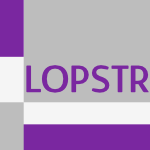 LOPSTR-2009-AlpuenteFJV #datalog #logic
LOPSTR-2009-AlpuenteFJV #datalog #logic- Defining Datalog in Rewriting Logic (MA, MAF, CJ, AV), pp. 188–204.
 ICSE-2009-GarlanS #architecture #evolution #named
ICSE-2009-GarlanS #architecture #evolution #named- Ævol: A tool for defining and planning architecture evolution (DG, BRS), pp. 591–594.
 CSL-2009-Grohe #fixpoint #polynomial
CSL-2009-Grohe #fixpoint #polynomial- Fixed-Point Definability and Polynomial Time (MG), pp. 20–23.
 ICLP-2009-VazCF
ICLP-2009-VazCF- User Defined Indexing (DV, VSC, MF), pp. 372–386.
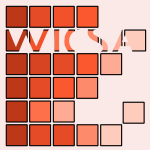 WICSA-2008-SanzACM #architecture #development #modelling #process
WICSA-2008-SanzACM #architecture #development #modelling #process- Defining Service-Oriented Software Architecture Models for a MDA-based Development Process at the PIM level (MLS, CJA, CEC, EM), pp. 309–312.
 CASE-2008-AzarnasabHAF #case study #design
CASE-2008-AzarnasabHAF #case study #design- Progressive simulation-based design: A case study example on software defined radio (EA, XH, PA, BFB), pp. 394–399.
 DATE-2008-BougardSRNADP #array
DATE-2008-BougardSRNADP #array- A Coarse-Grained Array based Baseband Processor for 100Mbps+ Software Defined Radio (BB, BDS, SR, DN, OA, SD, LVdP), pp. 716–721.
 DATE-2008-NovoBLPC #energy #fixpoint #refinement
DATE-2008-NovoBLPC #energy #fixpoint #refinement- Scenario-Based Fixed-point Data Format Refinement to Enable Energy-scalable Software Defined Radios (DN, BB, AL, LVdP, FC), pp. 722–727.
 HT-2008-AlbertsenB
HT-2008-AlbertsenB- User defined structural searches in mediawiki (JA, NOB), pp. 15–20.
 ICALP-B-2008-BojanczykS #first-order #logic #quantifier
ICALP-B-2008-BojanczykS #first-order #logic #quantifier- Tree Languages Defined in First-Order Logic with One Quantifier Alternation (MB, LS), pp. 233–245.
 GT-VMT-2006-Lanese08 #graph transformation
GT-VMT-2006-Lanese08 #graph transformation- Exploiting User-definable Synchronizations in Graph Transformation (IL), pp. 27–38.
 CAiSE-2008-FranchG #metric #towards
CAiSE-2008-FranchG #metric #towards- Towards a Catalogue of Patterns for Defining Metrics over i*Models (XF, GG), pp. 197–212.
 ICEIS-ISAS2-2008-SchmitzAFA #implementation #nondeterminism #order
ICEIS-ISAS2-2008-SchmitzAFA #implementation #nondeterminism #order- Defining the Implementation Order of Software Projects in Uncertain Environments (EAS, AJA, MCF, CMdA), pp. 23–29.
 ECMDA-FA-2008-Espinazo-PaganTM #approach #metamodelling
ECMDA-FA-2008-Espinazo-PaganTM #approach #metamodelling- Metamodel Syntactic Sheets: An Approach for Defining Textual Concrete Syntaxes (JEP, MMT, JGM), pp. 185–199.
 MoDELS-2008-KelsenM #approach #lightweight #modelling #semantics
MoDELS-2008-KelsenM #approach #lightweight #modelling #semantics- A Lightweight Approach for Defining the Formal Semantics of a Modeling Language (PK, QM), pp. 690–704.
 MoDELS-2008-KelsenM #approach #lightweight #modelling #semantics
MoDELS-2008-KelsenM #approach #lightweight #modelling #semantics- A Lightweight Approach for Defining the Formal Semantics of a Modeling Language (PK, QM), pp. 690–704.
 SAC-2008-SchmitzAA #implementation #nondeterminism #order
SAC-2008-SchmitzAA #implementation #nondeterminism #order- A method for defining the implementation order of software projects under uncertainty (EAS, AJA, CMdA), pp. 844–845.
 FSE-2008-OsterweilCEPWBH #dataset #experience #process #using #workflow
FSE-2008-OsterweilCEPWBH #dataset #experience #process #using #workflow- Experience in using a process language to define scientific workflow and generate dataset provenance (LJO, LAC, AME, RMP, AEW, ERB, JLH), pp. 319–329.
 ICSE-2008-EichbergKKM #dependence
ICSE-2008-EichbergKKM #dependence- Defining and continuous checking of structural program dependencies (ME, SK, KK, MM), pp. 391–400.
 CSL-2008-Katsumata
CSL-2008-Katsumata- A Characterisation of λ Definability with Sums Via TT-Closure Operators (SyK), pp. 278–292.
 ICST-2008-El-FakihKPY #fault #finite #state machine
ICST-2008-El-FakihKPY #fault #finite #state machine- Extended Finite State Machine Based Test Derivation Driven by User Defined Faults (KEF, AK, SP, NY), pp. 308–317.
 LICS-2008-Grohe08a
LICS-2008-Grohe08a- Definable Tree Decompositions (MG), pp. 406–417.
 DATE-2007-GailliardNSV #modelling #transaction
DATE-2007-GailliardNSV #modelling #transaction- Transaction level modelling of SCA compliant software defined radio waveforms and platforms PIM/PSM (GG, EN, MS, FV), pp. 966–971.
 DATE-2007-YeGM #interactive
DATE-2007-YeGM #interactive- Interactive presentation: An FPGA based all-digital transmitter with radio frequency output for software defined radio (ZY, JG, GM), pp. 21–26.
 PASTE-2007-ChinMMM #programming #validation
PASTE-2007-ChinMMM #programming #validation- Enforcing and validating user-defined programming disciplines (BC, DM, SM, TDM), pp. 85–86.
 DLT-2007-Matthissen #logic
DLT-2007-Matthissen #logic- Definable Transductions and Weighted Logics for Texts (CM), pp. 324–336.
 CEFP-2007-PlasmeijerAK #interactive #web
CEFP-2007-PlasmeijerAK #interactive #web- An Introduction to iTasks: Defining Interactive Work Flows for the Web (RP, PA, PWMK), pp. 1–40.
 AGTIVE-2007-RangerGH #graph #interface
AGTIVE-2007-RangerGH #graph #interface- Defining Abstract Graph Views as Module Interfaces (UR, KG, MH), pp. 120–135.
 HCI-AS-2007-PengKLC #approach #tablet
HCI-AS-2007-PengKLC #approach #tablet- The Practices of Scenario Observation Approach in Defining Medical Tablet PC Applications (CYP, WSK, YZL, WKC), pp. 518–524.
 HCI-IPT-2007-WuH #visualisation
HCI-IPT-2007-WuH #visualisation- The Perceptual Eye View: A User-Defined Method for Information Visualization (LHW, PYH), pp. 181–190.
 CAiSE-2007-GrauF #framework #named #re-engineering
CAiSE-2007-GrauF #framework #named #re-engineering- ReeF: Defining a Customizable Reengineering Framework (GG, XF), pp. 485–500.
 ICEIS-EIS-2007-MurzekK #model transformation #process
ICEIS-EIS-2007-MurzekK #model transformation #process- Business Process Model Transformation Issues — The Top 7 Adversaries Encountered at Defining Model Transformations (MM, GK), pp. 144–151.
 SEKE-2007-VilainFM #agile #framework #process
SEKE-2007-VilainFM #agile #framework #process- A Framework for Selecting Agile Practices and Defining Agile Software Processes (PV, PBF, TLM), pp. 25–28.
 MoDELS-2007-XuL #interactive #monitoring #visual notation
MoDELS-2007-XuL #interactive #monitoring #visual notation- Formally Defining a Graphical Language for Monitoring and Checking Object Interactions (KX, DL), pp. 620–634.
 MoDELS-2007-XuL #interactive #monitoring #visual notation
MoDELS-2007-XuL #interactive #monitoring #visual notation- Formally Defining a Graphical Language for Monitoring and Checking Object Interactions (KX, DL), pp. 620–634.
 PPDP-2007-KoninckSD
PPDP-2007-KoninckSD- User-definable rule priorities for CHR (LDK, TS, BD), pp. 25–36.
 REFSQ-2007-RinkeW #how #modelling #requirements
REFSQ-2007-RinkeW #how #modelling #requirements- Defining Reference Models for Modelling Qualities: How Requirements Engineering Techniques Can Help (TR, TW), pp. 335–340.
 SAC-2007-SaCA #personalisation
SAC-2007-SaCA #personalisation- Defining personalized therapies for handheld devices (MdS, LC, PA), pp. 163–164.
 ICLP-2007-NavasMLH #analysis #bound #logic programming #source code
ICLP-2007-NavasMLH #analysis #bound #logic programming #source code- User-Definable Resource Bounds Analysis for Logic Programs (JAN, EM, PLG, MVH), pp. 348–363.
 CBSE-2006-Hamlet #assembly #predict
CBSE-2006-Hamlet #assembly #predict- Defining “Predictable Assembly” (DH), pp. 320–327.
 CBSE-2006-LauU #component #contract #deployment
CBSE-2006-LauU #component #contract #deployment- Defining and Checking Deployment Contracts for Software Components (KKL, VU), pp. 1–16.
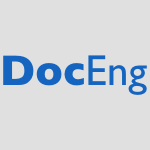 DocEng-2006-BrunoM #query #xml
DocEng-2006-BrunoM #query #xml- Describing and querying hierarchical XML structures defined over the same textual data (EB, EM), pp. 147–154.
 SIGMOD-2006-Cohen #theory and practice
SIGMOD-2006-Cohen #theory and practice- User-defined aggregate functions: bridging theory and practice (SC), pp. 49–60.
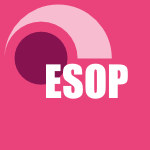 ESOP-2006-ChinMMP
ESOP-2006-ChinMMP- Inference of User-Defined Type Qualifiers and Qualifier Rules (BC, SM, TDM, JP), pp. 264–278.
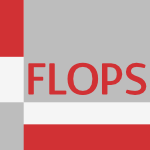 FLOPS-2006-BartheFPR #coq #proving #reasoning #recursion
FLOPS-2006-BartheFPR #coq #proving #reasoning #recursion- Defining and Reasoning About Recursive Functions: A Practical Tool for the Coq Proof Assistant (GB, JF, DP, VR), pp. 114–129.
 ECMDA-FA-2006-BraheO #modelling #process #uml
ECMDA-FA-2006-BraheO #modelling #process #uml- Business Process Modeling: Defining Domain Specific Modeling Languages by Use of UML Profiles (SB, KØ), pp. 241–255.
 MoDELS-2006-Baar #modelling #syntax #visual notation
MoDELS-2006-Baar #modelling #syntax #visual notation- Correctly Defined Concrete Syntax for Visual Modeling Languages (TB), pp. 111–125.
 MoDELS-2006-Baar #modelling #syntax #visual notation
MoDELS-2006-Baar #modelling #syntax #visual notation- Correctly Defined Concrete Syntax for Visual Modeling Languages (TB), pp. 111–125.
 SAC-2006-Gomez-SanzP #coordination #multi #re-engineering
SAC-2006-Gomez-SanzP #coordination #multi #re-engineering- Defining coordination in multi-agent systems within an agent oriented software engineering methodology (JJGS, JP), pp. 424–428.
 SAC-2006-LallouetL #consistency #constraints #satisfiability
SAC-2006-LallouetL #consistency #constraints #satisfiability- From satisfiability to consistency through certificates: application to partially defined constraints (AL, AL), pp. 415–416.
 SPLC-2006-KoskiL #product line
SPLC-2006-KoskiL #product line- The JTRS Program: Software-Defined Radios as a Software Product Line (EK, CL), pp. 182–191.
 SPLC-2006-TraskRPB #component #modelling #product line #using
SPLC-2006-TraskRPB #component #modelling #product line #using- Using Model-Driven Engineering to Complement Software Product Line Engineering in Developing Software Defined Radio Components and Applications (BT, AR, DP, VB), pp. 192–202.
 PPoPP-2006-DeitzCCS #abstraction #reduction
PPoPP-2006-DeitzCCS #abstraction #reduction- Global-view abstractions for user-defined reductions and scans (SJD, DC, BLC, LS), pp. 40–47.
 LICS-2006-DawarGKS #approximate #first-order #optimisation #problem
LICS-2006-DawarGKS #approximate #first-order #optimisation #problem- Approximation Schemes for First-Order Definable Optimisation Problems (AD, MG, SK, NS), pp. 411–420.
 DATE-2005-ZhaoG #semantics
DATE-2005-ZhaoG #semantics- Defining an Enhanced RTL Semantics (SZ, DDG), pp. 548–553.
 ICSM-2005-PilskalnsWA #component #design
ICSM-2005-PilskalnsWA #component #design- Defining Maintainable Components in the Design Phase (OP, DW, AAA), pp. 49–58.
 STOC-2005-Basu #algebra #algorithm #polynomial #set
STOC-2005-Basu #algebra #algorithm #polynomial #set- Polynomial time algorithm for computing the top Betti numbers of semi-algebraic sets defined by quadratic inequalities (SB), pp. 313–322.
 DLT-J-2004-DassowH05 #problem #product line
DLT-J-2004-DassowH05 #problem #product line- Language families defined by a ciliate bio-operation: hierarchies and decision problems (JD, MH), pp. 645–662.
 FM-2005-SalverdaRZ #parallel #verification
FM-2005-SalverdaRZ #parallel #verification- Formally Defining and Verifying Master/Slave Speculative Parallelization (PS, GR, CBZ), pp. 123–138.
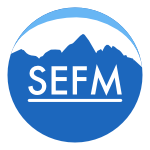 SEFM-2005-GervaisFL #database #generative #recursion #relational #transaction
SEFM-2005-GervaisFL #database #generative #recursion #relational #transaction- Generating Relational Database Transactions From Recursive Functions Defined on EB3 Traces (FG, MF, RL), pp. 117–126.
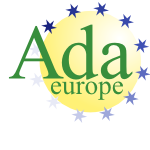 AdaEurope-2005-RivasMH #ada #policy #scheduling
AdaEurope-2005-RivasMH #ada #policy #scheduling- Integrating Application-Defined Scheduling with the New Dispatching Policies for Ada Tasks (MAR, JM, MGH), pp. 220–235.
 SAC-2005-EgidiT #approach #database #flexibility
SAC-2005-EgidiT #approach #database #flexibility- A flexible approach to user-defined symbolic granularities in temporal databases (LE, PT), pp. 592–597.
 SAC-2005-RobinsonRHD #automation #database
SAC-2005-RobinsonRHD #automation #database- User-defined view automation of genomic databases (AJR, JWR, SH, TSD), pp. 671–675.
 SPLC-2005-ReiserW #set #using
SPLC-2005-ReiserW #set #using- Using Product Sets to Define Complex Product Decisions (MOR, MW), pp. 21–32.
 SPLC-2005-TolvanenK #case study #domain-specific language #experience #modelling
SPLC-2005-TolvanenK #case study #domain-specific language #experience #modelling- Defining Domain-Specific Modeling Languages to Automate Product Derivation: Collected Experiences (JPT, SK), pp. 198–209.
 SPLC-2005-Trew #architecture #embedded #integration #product line
SPLC-2005-Trew #architecture #embedded #integration #product line- Enabling the Smooth Integration of Core Assets: Defining and Packaging Architectural Rules for a Family of Embedded Products (TT), pp. 137–149.
 LICS-2005-Atserias05a #random
LICS-2005-Atserias05a #random- Definability on a Random 3-CNF Formula (AA), pp. 458–466.
 DAC-2004-AsafMZ #analysis #functional
DAC-2004-AsafMZ #analysis #functional- Defining coverage views to improve functional coverage analysis (SA, EM, AZ), pp. 41–44.
 DLT-2004-DaleyD #on the
DLT-2004-DaleyD #on the- On Codes Defined by Bio-Operations (MD, MD), pp. 127–138.
 AdaEurope-2004-RivasGH #ada #framework #implementation #scheduling
AdaEurope-2004-RivasGH #ada #framework #implementation #scheduling- Implementing an Application-Defined Scheduling Framework for Ada Tasking (MAR, FJMG, MGH), pp. 283–296.
 SEKE-2004-OFallonPKA #component #design
SEKE-2004-OFallonPKA #component #design- Defining and Qualifying Components in the Design Phase (AO, OP, AK, AAA), pp. 129–134.
 RE-2004-BuhneHPWKW #abstraction #requirements
RE-2004-BuhneHPWKW #abstraction #requirements- Defining Requirements at Different Levels of Abstraction (SB, GH, KP, MW, HK, TW), pp. 346–347.
 RE-2004-RegevW #approach #requirements
RE-2004-RegevW #approach #requirements- Defining Early IT System Requirements with Regulation Principles: The Lightswitch Approach (GR, AW), pp. 144–153.
 SAC-2004-PereiraS #architecture #enterprise #framework #using
SAC-2004-PereiraS #architecture #enterprise #framework #using- A method to define an Enterprise Architecture using the Zachman Framework (CMP, PMAS), pp. 1366–1371.
 LICS-2004-DalmauKL #first-order #graph #problem #reflexive
LICS-2004-DalmauKL #first-order #graph #problem #reflexive- First-Order Definable Retraction Problems for Posets and Reflexive Graph (VD, AAK, BL), pp. 232–241.
 DATE-2003-BurmenPT #cost analysis #design #optimisation #robust
DATE-2003-BurmenPT #cost analysis #design #optimisation #robust- Defining Cost Functions for Robust IC Design and Optimization (ÁB, JP, TT), pp. 20196–20201.
 ICEIS-v1-2003-Aaen #process
ICEIS-v1-2003-Aaen #process- Software Process Improvement Defined (IA), pp. 169–176.
 ICEIS-v3-2003-CechichP #assessment #component #integration
ICEIS-v3-2003-CechichP #assessment #component #integration- Defining Stability for Component Integration Assessment (AC, MP), pp. 251–256.
 SEKE-2003-GambleGD #assessment #component
SEKE-2003-GambleGD #assessment #component- Defining Change Management Properties for Component Interoperability Assessment (MTG, RFG, LAD), pp. 475–482.
 ICSE-2003-GantnerB #adaptation #bibliography #case study #experience #process
ICSE-2003-GantnerB #adaptation #bibliography #case study #experience #process- Experiences on Defining and Evaluating an Adapted Review Process (TG, TB), pp. 506–511.
 CSL-2003-Korovina #aspect-oriented #similarity
CSL-2003-Korovina #aspect-oriented #similarity- Computational Aspects of σ-Definability over the Real Numbers without the Equality Test (MVK), pp. 330–344.
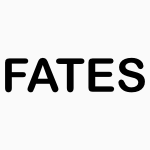 FATES-2003-Aaltonen #distributed
FATES-2003-Aaltonen #distributed- Defining Observation Objectives for Reactive and Distributed Systems (TA), pp. 101–113.
 LICS-2003-Kopylov #type system
LICS-2003-Kopylov #type system- Dependent Intersection: A New Way of Defining Records in Type Theory (AK), pp. 86–95.
 LICS-2003-LibkinN #logic #query
LICS-2003-LibkinN #logic #query- Logical Definability and Query Languages over Unranked Trees (LL, FN), pp. 178–187.
 TLCA-2003-BucciarelliLP #modelling
TLCA-2003-BucciarelliLP #modelling- Relative Definability and Models of Unary PCF (AB, BL, VP), pp. 75–89.
 ITiCSE-2002-Pears #education #research
ITiCSE-2002-Pears #education #research- Defining a global view of CS education research (AP), p. 227.
 AdaEurope-2002-RivasH #interface #scheduling
AdaEurope-2002-RivasH #interface #scheduling- A POSIX-Ada Interface for Application-Defined Scheduling (MAR, MGH), pp. 136–150.
 CAiSE-2002-GeneroPP #concept #metric #quality #validation
CAiSE-2002-GeneroPP #concept #metric #quality #validation- Defining and Validating Measures for Conceptual Data Model Quality (MG, GP, MP), pp. 724–727.
 SEKE-2002-CanforaC #approach #visual notation #xml
SEKE-2002-CanforaC #approach #visual notation #xml- A visual approach to define XML to FO transformations (GC, LC), pp. 563–570.
 UML-2002-AkehurstK #approach #metamodelling #relational
UML-2002-AkehurstK #approach #metamodelling #relational- A Relational Approach to Defining Transformations in a Metamodel (DHA, SK), pp. 243–258.
 RE-2002-Schmid #approach #product line
RE-2002-Schmid #approach #product line- The Product Line Mapping Approach to Defining and Structuring Product Portfolios (KS), pp. 219–226.
 VMCAI-2002-MurawskiY #analysis
VMCAI-2002-MurawskiY #analysis- Static Monotonicity Analysis for lambda-definable Functions over Lattices (ASM, KY), pp. 139–153.
 AdaEurope-2001-Burns #ada #policy
AdaEurope-2001-Burns #ada #policy- Defining New Non-preemptive Dispatching and Locking Policies for Ada (AB), pp. 328–336.
 ICEIS-v2-2001-KuzniarzP #uml
ICEIS-v2-2001-KuzniarzP #uml- Defining Pattern Class Stereotypes in UML (LK, MP), pp. 578–582.
 ICML-2001-LloraG #algorithm
ICML-2001-LloraG #algorithm- Inducing Partially-Defined Instances with Evolutionary Algorithms (XL, JMGiG), pp. 337–344.
 SEKE-2001-Marcos #inheritance #multi #taxonomy
SEKE-2001-Marcos #inheritance #multi #taxonomy- Defining taxonomic hierarchies: their implications for multiple inheritance (EM), pp. 336–340.
 ECOOP-2001-HaradaYP #c #named
ECOOP-2001-HaradaYP #c #named- CCC: User-Defined Object Structure in C (YH, KY, RP), pp. 118–129.
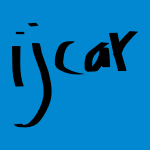 IJCAR-2001-Urbain #automation #incremental #proving #term rewriting #termination
IJCAR-2001-Urbain #automation #incremental #proving #term rewriting #termination- Automated Incremental Termination Proofs for Hierarchically Defined Term Rewriting Systems (XU), pp. 485–498.
 LICS-2001-HuuskonenH #logic #on the #order
LICS-2001-HuuskonenH #logic #on the #order- On Definability of Order in Logic with Choice (TH, TH), pp. 167–172.
 TLCA-2001-Normann #calculus
TLCA-2001-Normann #calculus- Definability of Total Objects in PCF and Related Calculi (DN), pp. 4–5.
 HT-2000-LiKVT #logic #web
HT-2000-LiKVT #logic #web- Defining logical domains in a web site (WSL, OK, QV, HT), pp. 123–132.
 WRLA-2000-KulasB #logic #prolog #standard
WRLA-2000-KulasB #logic #prolog #standard- Defining Standard Prolog in Rewriting Logic (MK, CB), pp. 158–174.
 CSMR-2000-Oinas #case study #fault #metric
CSMR-2000-Oinas #case study #fault #metric- Defining Goal-driven Fault Management Metrics in a Real World Environment: A Case-Study from Nokia (AO), pp. 101–108.
 WCRE-2000-Godfrey
WCRE-2000-Godfrey- Defining, Transforming, and Exchanging High-Level Schemas (MWG), pp. 290–292.
 STOC-2000-Grohe #graph #morphism #testing
STOC-2000-Grohe #graph #morphism #testing- Isomorphism testing for embeddable graphs through definability (MG), pp. 63–72.
 CAiSE-2000-Zhang #automation #component
CAiSE-2000-Zhang #automation #component- Defining Components in a MetaCASE Environment (ZZ), pp. 340–354.
 ICPR-v1-2000-Rodriguez-SanchezGFF #how
ICPR-v1-2000-Rodriguez-SanchezGFF #how- How to Define the Notion of Microcalcifications in Digitized Mammograms (RRS, JAG, JFV, XRFV), pp. 1494–1499.
 ICPR-v3-2000-Levienaise-ObadiaKC #retrieval #similarity
ICPR-v3-2000-Levienaise-ObadiaKC #retrieval #similarity- Defining Quantization Strategies and a Perceptual Similarity Measure for Texture-Based Annotation and Retrieval (BLO, JK, WJC), pp. 3453–3457.
 CSL-2000-BenediktK #constraints #linear
CSL-2000-BenediktK #constraints #linear- Definability over Linear Constraints (MB, HJK), pp. 217–231.
 LICS-2000-AfratiLR
LICS-2000-AfratiLR- Definability and Compression (FNA, HL, MdR), pp. 63–73.
 ICDAR-1999-KochiS #documentation #identification
ICDAR-1999-KochiS #documentation #identification- User-defined Template for Identifying Document Type and Extracting Information from Documents (TK, TS), pp. 127–130.
 ICDAR-1999-NosaryHPL #adaptation #invariant #recognition
ICDAR-1999-NosaryHPL #adaptation #invariant #recognition- Defining Writer’s Invariants to Adapt the Recognition Task (AN, LH, TP, YL), pp. 765–768.
 VLDB-1999-ChenCFGJMTW
VLDB-1999-ChenCFGJMTW- High Level Indexing of User-Defined Types (WC, JHC, YCF, JG, MJ, NMM, BTT, YW), pp. 554–564.
 VLDB-1999-JaedickeM
VLDB-1999-JaedickeM- User-Defined Table Operators: Enhancing Extensibility for ORDBMS (MJ, BM), pp. 494–505.
 FM-v2-1999-LangLL #calculus #framework
FM-v2-1999-LangLL #calculus #framework- A Framework for Defining Object-Calculi (FL, PL, LL), pp. 963–982.
 AGTIVE-1999-Blostein #semantics #syntax #visual notation
AGTIVE-1999-Blostein #semantics #syntax #visual notation- Defining the Syntax and Semantics of Natural Visual Languages (DB), pp. 225–232.
 HCI-CCAD-1999-KaasinenAL #requirements
HCI-CCAD-1999-KaasinenAL #requirements- Defining user requirements for WAP services (EK, MA, TL), pp. 33–37.
 AdaEurope-1999-Emery #architecture #framework
AdaEurope-1999-Emery #architecture #framework- Architectural Frameworks: Defining the Contents of Architectural Descriptions (DEE), pp. 64–75.
 UML-1999-CookKMWW #ocl
UML-1999-CookKMWW #ocl- Defining the Context of OCL Expressions (SC, AK, RM, JW, AW), pp. 372–383.
 TOOLS-PACIFIC-1999-CookKWMRW #product line #uml #using
TOOLS-PACIFIC-1999-CookKWMRW #product line #uml #using- Defining UML Family Members Using Prefaces (SC, AK, JW, RM, BR, ACW), pp. 102–114.
 ICSE-1999-ArdisC #analysis #product line
ICSE-1999-ArdisC #analysis #product line- Defining Families — Commonality Analysis (MAA, DAC), pp. 671–672.
 IWTCS-1999-KoufarevaPY #fault #generative #modelling #testing
IWTCS-1999-KoufarevaPY #fault #generative #modelling #testing- Test Generation Driven by User-defined Fault Models (IK, AP, NY), pp. 215–236.
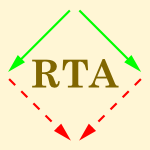 RTA-1999-Courcelle #graph #logic
RTA-1999-Courcelle #graph #logic- Hierarchical Graph Decompositions Defined by Grammars and Logical Formulas (BC), pp. 90–91.
 TLCA-1999-FioreS #logic
TLCA-1999-FioreS #logic- λ Definability with Sums via Grothendieck Logical Relations (MPF, AKS), pp. 147–161.
 DAC-1998-GrinwaldHOUZ #design #tool support #verification
DAC-1998-GrinwaldHOUZ #design #tool support #verification- User Defined Coverage — A Tool Supported Methodology for Design Verification (RG, EH, MO, SU, AZ), pp. 158–163.
 VLDB-1998-CarinoO #execution #optimisation #parallel
VLDB-1998-CarinoO #execution #optimisation #parallel- Plan-Per-Tuple Optimization Solution — Parallel Execution of Expensive User-Defined Functions (FC, WO), pp. 690–695.
 FLOPS-1998-Tsukada #equation #reasoning
FLOPS-1998-Tsukada #equation #reasoning- Type-free Equational Reasoning in the Theeory of Inductively Defined Types (YT), pp. 227–246.
 ICALP-1998-BorchertKS #first-order #on the
ICALP-1998-BorchertKS #first-order #on the- On Existentially First-Order Definable Languages and Their Relation to NP (BB, DK, FS), pp. 17–28.
 ICALP-1998-BucciarelliS
ICALP-1998-BucciarelliS- Totality, Definability and Boolean Ciruits (AB, IS), pp. 808–819.
 KDD-1998-KellyHA #data mining #mining #performance
KDD-1998-KellyHA #data mining #mining #performance- Defining the Goals to Optimise Data Mining Performance (MGK, DJH, NMA), pp. 234–238.
 KDD-1998-Subramonian #data mining #mining
KDD-1998-Subramonian #data mining #mining- Defining diff as a Data Mining Primitive (RS), pp. 334–338.
 KR-1998-LangM #complexity #independence #logic
KR-1998-LangM #complexity #independence #logic- Complexity Results for Independence and Definability in Propositional Logic (JL, PM), pp. 356–367.
 SIGIR-1998-SaitoO #user satisfaction #web
SIGIR-1998-SaitoO #user satisfaction #web- A Cognitive Model for Searching for Ill-Defined Targets on the Web: The Relationship Between Search Strategies and User Satisfaction (MS, KO), pp. 155–163.
 CSL-1998-Makowsky #invariant
CSL-1998-Makowsky #invariant- Invariant Definability and P/poly (JAM), pp. 142–158.
 HT-1997-WangH #process
HT-1997-WangH #process- Supporting User-defined Activity Spaces (WW, JMH), pp. 112–123.
 DLT-1997-IkedaA #complexity #on the
DLT-1997-IkedaA #complexity #on the- On the Complexity of Languages Definable by Hereditary Elementary Formal Systems (DI, HA), pp. 223–235.
 ICALP-1997-Kabanets
ICALP-1997-Kabanets- Recognizability Equals Definability for Partial k-Paths (VK), pp. 805–815.
 HCI-CC-1997-PerusichM #fuzzy #problem #using
HCI-CC-1997-PerusichM #fuzzy #problem #using- Using Fuzzy Cognitive Maps to Define the Search Space in Problem Solving (KP, MDM), pp. 805–808.
 CAiSE-1997-KloosterBHW #information management #intranet
CAiSE-1997-KloosterBHW #information management #intranet- Intranet Facilitated Knowledge Management: A Theory and Tool for Defining Situational Methods (MK, SB, FH, GW), pp. 303–317.
 ICSE-1997-ArdisW #analysis #product line #tutorial
ICSE-1997-ArdisW #analysis #product line #tutorial- Defining Families: The Commonality Analysis (Tutorial) (MAA, DMW), pp. 649–650.
 LICS-1997-Hughes #game studies #system f
LICS-1997-Hughes #game studies #system f- Games and Definability for System F (DJDH), pp. 76–86.
 TLCA-1997-MalolepszyMZ #decidability
TLCA-1997-MalolepszyMZ #decidability- Schwichtenberg-Style λ Definability Is Undecidable (JM, MM, MZ), pp. 267–283.
 VLDB-1996-ChaudhuriS #optimisation #query
VLDB-1996-ChaudhuriS #optimisation #query- Optimization of Queries with User-defined Predicates (SC, KS), pp. 87–98.
 VLDB-1996-Hammond #consistency #set #using
VLDB-1996-Hammond #consistency #set #using- Using Referential Integrity To Easily Define Consistent Subset Replicas (BH), p. 591.
 SEKE-1996-Gates #constraints #on the
SEKE-1996-Gates #constraints #on the- On Defining a Class of Integrity Constraints (AQG), pp. 338–344.
 PLILP-1996-Kahrs
PLILP-1996-Kahrs- Limits of ML-Definability (SK), pp. 17–31.
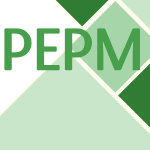 PEPM-1995-Metayer #data type #proving #recursion #source code
PEPM-1995-Metayer #data type #proving #recursion #source code- Proving Properties of Programs Defined over Recursive Data Structures (DLM), pp. 88–99.
 PEPM-1995-Monsuez #abstract interpretation #strict #type inference #using
PEPM-1995-Monsuez #abstract interpretation #strict #type inference #using- Using Abstract Interpretation to Define a Strictness Type Inference System (BM), pp. 122–133.
 DLT-1995-Drewes #on the
DLT-1995-Drewes #on the- On the Connectedness of Pictures Defined by Iterated Function Systems (FD), pp. 289–298.
 DLT-1995-DrosteK #composition #quantifier
DLT-1995-DrosteK #composition #quantifier- Trace Languages Definable with Modular Quantifiers (MD, DK), pp. 386–395.
 ICALP-1995-DawarHK #finite #logic
ICALP-1995-DawarHK #finite #logic- Implicit Definability and Infinitary Logic in Finite Model Theory (AD, LH, PGK), pp. 624–635.
 TAGT-1994-CourcelleS #graph #set
TAGT-1994-CourcelleS #graph #set- The Obstructions of a Minor-Closed Set of Graphs Defined by Hyperedge Replacement can be Constructed (BC, GS), pp. 351–367.
 CSCW-1994-NeuwirthKCM #collaboration #distributed #interactive #parametricity
CSCW-1994-NeuwirthKCM #collaboration #distributed #interactive #parametricity- Computer Support for Distributed Collaborative Writing: Defining Parameters of Interaction (CN, DK, RC, JHM), pp. 145–152.
 CIKM-1994-Al-AnziS #behaviour #concurrent #modelling #towards
CIKM-1994-Al-AnziS #behaviour #concurrent #modelling #towards- Modeling Behavior, A Step Towards Defining Functionally Correct Views of Complex Objects in Concurrent Engineering (FSAA, DLS), pp. 1–9.
 KR-1994-Gotts #how #using
KR-1994-Gotts #how #using- How Far Can We “C”? Defining a “Doughnut” Using Connection Alone (NMG), pp. 246–257.
 LICS-1994-HellaKL #finite #how #linear #modelling #order
LICS-1994-HellaKL #finite #how #linear #modelling #order- How to Define a Linear Order on Finite Models (LH, PGK, KL), pp. 40–49.
 DAC-1993-SuttonBD #design #using
DAC-1993-SuttonBD #design #using- Design Management Using Dynamically Defined Flows (PRS, JBB, SWD), pp. 648–653.
 ICALP-1993-EbingerM #infinity #logic
ICALP-1993-EbingerM #infinity #logic- Logical Definability on Infinite Traces (WE, AM), pp. 335–346.
 OOPSLA-1993-LiskovW #specification #type system
OOPSLA-1993-LiskovW #specification #type system- Specifications and Their Use in Defining Subtypes (BL, JMW), pp. 16–28.
 RE-1993-HarrisonB #interactive #on the #requirements
RE-1993-HarrisonB #interactive #on the #requirements- On defining requirements for interaction (MDH, PJB), pp. 50–54.
 ICLP-1993-Fruhwirth #constraints
ICLP-1993-Fruhwirth #constraints- User-Defined Constraint Handling (TWF), pp. 837–838.
 ILPS-1993-BaldoniGM #logic programming #multimodal
ILPS-1993-BaldoniGM #logic programming #multimodal- A Multimodal Logic to Define Modules in Logic Programming (MB, LG, AM), pp. 473–487.
 RTA-1993-Raoult #recursion
RTA-1993-Raoult #recursion- Recursively Defined Tree Transductions (JCR), pp. 343–357.
 TLCA-1993-JungT
TLCA-1993-JungT- A New Characterization of λ Definability (AJ, JT), pp. 245–257.
 SIGMOD-1992-GesmannGHHKMS #database #named
SIGMOD-1992-GesmannGHHKMS #database #named- PRIMA — A Database System Supporting Dynamically Defined Composite Objects (MG, AG, TH, CH, WK, BM, HS), p. 5.
 TRI-Ada-C-1992-Carmichael #architecture #design #object-oriented #using
TRI-Ada-C-1992-Carmichael #architecture #design #object-oriented #using- Defining Software Architectures Using the Hierarchical Object-Oriented Design Nethod (HOOD) (ARC), pp. 211–219.
 CSL-1992-GradelO #finite #induction
CSL-1992-GradelO #finite #induction- Inductive Definability with Counting on Finite Structures (EG, MO), pp. 231–247.
 CSL-1992-Lautemann #logic #monad #problem
CSL-1992-Lautemann #logic #monad #problem- Logical Definability of NP-Optimization Problems with Monadic Auxiliary Predicates (CL), pp. 327–339.
 LICS-1992-Stolboushkin #axiom #finite #linear #modelling #order
LICS-1992-Stolboushkin #axiom #finite #linear #modelling #order- Axiomatizable Classes of Finite Models and Definability of Linear Order (APS), pp. 64–70.
 CSL-1991-Tyszkiewicz #logic #query #transitive
CSL-1991-Tyszkiewicz #logic #query #transitive- Infinitary Queries and Their Asymptotic Probabilities I: Properties Definable in Transitive Closue Logic (JT), pp. 396–410.
 GG-1990-Caucal #graph grammar
GG-1990-Caucal #graph grammar- An Application of Graph Grammars to the Elimination of Redundancy from Functions Defined by Schemes (DC), pp. 190–206.
 CC-1990-LammelF #attribute grammar
CC-1990-LammelF #attribute grammar- Mixed Dialogue Control Defined by an Attribute Grammar (Abstract) (UL, PF), pp. 219–221.
 LICS-1990-Kolaitis #ambiguity #finite
LICS-1990-Kolaitis #ambiguity #finite- Implicit Definability on Finite Structures and Unambiguous Computations (Preliminary Report) (PGK), pp. 168–180.
 ICALP-1989-Courcelle #equation #graph #higher-order #logic #monad
ICALP-1989-Courcelle #equation #graph #higher-order #logic #monad- The Definability of Equational Graphs in Monadic Second-Order Logic (BC), pp. 207–221.
 LICS-1989-Lubarsky #integer #set
LICS-1989-Lubarsky #integer #set- μ-Definable Sets of Integers (RSL), pp. 343–352.
 PODS-1988-Hegner #component #composition #relational #strict
PODS-1988-Hegner #component #composition #relational #strict- Decomposition of Relational Schemata into Components Defined by Both Projection and Restriction (SJH), pp. 174–183.
 VLDB-1988-LinnemannKDPEKSWW #data type #database #design #implementation
VLDB-1988-LinnemannKDPEKSWW #data type #database #design #implementation- Design and Implementation of an Extensible Database Management System Supporting User Defined Data Types and Functions (VL, KK, PD, PP, RE, AK, NS, GW, MW), pp. 294–305.
 VLDB-1988-LynchS #database
VLDB-1988-LynchS #database- Extended User-Defined Indexing with Application to Textual Databases (CAL, MS), pp. 306–317.
 ICALP-1988-StraubingTT #quantifier #regular expression
ICALP-1988-StraubingTT #quantifier #regular expression- regular Languages Defined with Generalized Quantifiers (HS, DT, WT), pp. 561–575.
 ECOOP-1987-EgeM #interface #visual notation
ECOOP-1987-EgeM #interface #visual notation- The Filter Browser Defining Interfaces Graphically (RKE, DM), pp. 140–150.
 LICS-1987-HarperHP #framework #logic
LICS-1987-HarperHP #framework #logic- A Framework for Defining Logics (RH, FH, GDP), pp. 194–204.
 LICS-1987-ImmermanK #bound
LICS-1987-ImmermanK #bound- Definability with Bounded Number of Bound Variables (NI, DK), pp. 236–244.
 DAC-1986-ClarkeF #geometry #layout #named #recursion
DAC-1986-ClarkeF #geometry #layout #named #recursion- Escher — a geometrical layout system for recursively defined circuits (EMC, YF), pp. 650–653.
 OOPSLA-1986-BallardMW #named
OOPSLA-1986-BallardMW #named- Quicktalk: A Smalltalk-80 Dialect for Defining Primitive Methods (MBB, DM, AWB), pp. 140–150.
 ICLP-1986-Moss86 #prolog
ICLP-1986-Moss86 #prolog- Cut and Paste — defining the impure Primitives of Prolog (CM), pp. 686–694.
 LICS-1986-Meyer #hoare #logic #semantics
LICS-1986-Meyer #hoare #logic #semantics- Floyd-Hoare Logic Defines Semantics: Preliminary Version (ARM), pp. 44–48.
 DAC-1985-SchefferS #abstraction #analysis
DAC-1985-SchefferS #abstraction #analysis- Hierarchical analysis of IC artwork with user defined abstraction rules (LS, RS), pp. 293–298.
 VLDB-1985-Ioannidis #bound #recursion
VLDB-1985-Ioannidis #bound #recursion- A Time Bound on the Materialization of some Recursively Defined Views (YEI), pp. 219–226.
 ICALP-1985-Coppo #recursion #theorem
ICALP-1985-Coppo #recursion #theorem- A Completeness Theorem for Recursively Defined Types (MC), pp. 120–129.
 SLP-1985-GlasgowJM85 #parallel
SLP-1985-GlasgowJM85 #parallel- User Defined Parallel Control Strategies in Nial (JIG, MAJ, CM), pp. 22–28.
 VLDB-1984-YangD
VLDB-1984-YangD- A Dynamic Perfect Hash Function Defined by an Extended Hash Indicator Table (WPY, MWD), pp. 245–254.
 STOC-1984-Rougemont #finite
STOC-1984-Rougemont #finite- Uniform Definability on Finite Structures with Successor (MdR), pp. 409–417.
 ICALP-1984-BergstraK #algebra #process #recursion
ICALP-1984-BergstraK #algebra #process #recursion- The Algebra of Recursively Defined Processes and the Algebra of Regular Processes (JAB, JWK), pp. 82–94.
 DAC-1982-NestorT #design #implementation #multi #representation #simulation
DAC-1982-NestorT #design #implementation #multi #representation #simulation- Defining and implementing a multilevel design representation with simulation applications (JAN, DET), pp. 740–746.
 LFP-1982-Moss #how #prolog #using
LFP-1982-Moss #how #prolog #using- How to Define a Language Using PROLOG (CDSM), pp. 67–73.
 POPL-1982-MeyerM #axiom #recursion #source code
POPL-1982-MeyerM #axiom #recursion #source code- Axiomatic Definability and Completeness for Recursive Programs (ARM, JCM), pp. 337–346.
 ICSE-1982-SakabeIH #data type #specification
ICSE-1982-SakabeIH #data type #specification- Specification of Abstract Data Types with Partially Defined Operations (TS, YI, NH), pp. 218–224.
 DAC-1981-GoatesP #array #design #layout #lisp #logic #modelling #named
DAC-1981-GoatesP #array #design #layout #lisp #logic #modelling #named- ABLE: A LISP-based layout modeling language with user-definable procedural models for storage/logic array design (GBG, SSP), pp. 322–329.
 DAC-1981-Goldstein #bound
DAC-1981-Goldstein #bound- Defining the bounding edges of a SynthaVision solid model (RCG), pp. 457–461.
 VLDB-1981-Sakai #concept #design #transaction
VLDB-1981-Sakai #concept #design #transaction- A Method for Defining Information Structures and Transactions in Conceptual Schema Design (HS), pp. 225–234.
 STOC-1980-MeyerP #logic
STOC-1980-MeyerP #logic- Definability in Dynamic Logic (ARM, RP), pp. 1–7.
 TFDA-1980-BundgaardS #ada #semantics
TFDA-1980-BundgaardS #ada #semantics- A Denotational (Static) Semantics Method for Defining Ada Context Conditions (JB, LS), pp. 21–212.
 SDCG-1980-Madsen #attribute grammar #on the #semantics
SDCG-1980-Madsen #attribute grammar #on the #semantics- On defining semantics by means of extended attribute grammars (OLM), pp. 259–299.
 POPL-1978-AshcroftW #named
POPL-1978-AshcroftW #named- Clauses: Scope Structures and Defined Functions in Lucid (EAA, WWW), pp. 17–22.
 POPL-1978-Oppen #data type #reasoning #recursion
POPL-1978-Oppen #data type #reasoning #recursion- Reasoning about Recursively Defined Data Structures (DCO), pp. 151–157.
 ICALP-1977-Damm
ICALP-1977-Damm- Languages Defined by Higher Type Program Schemes (WD), pp. 164–179.
 ICALP-1977-SippuS #fault #on the #parsing
ICALP-1977-SippuS #fault #on the #parsing- On Defining Error Recovery in Context-Free Parsing (SS, ESS), pp. 492–503.
 ICALP-1976-Cartwright #data type #lisp #source code #verification
ICALP-1976-Cartwright #data type #lisp #source code #verification- User-Defined Data Types as an Aid to Verifying LISP Programs (RC), pp. 228–256.
 STOC-1975-Skyum #on the #parallel
STOC-1975-Skyum #on the #parallel- On Decomposing Languages Defined by Parallel Devices (SS), pp. 121–125.
 ICALP-1974-EhrenfeuchtR #morphism #term rewriting #trade-off
ICALP-1974-EhrenfeuchtR #morphism #term rewriting #trade-off- Trade-off between the Use of Nonterminals, Codings and Homomorphisms in Defining Languages for Some Classes of Rewriting Systems (AE, GR), pp. 473–480.
 POPL-1973-LewisR #data type #recursion
POPL-1973-LewisR #data type #recursion- Recursively Defined Data Types (CHL, BKR), pp. 125–138.
 ICALP-1972-HenkeIW #automaton #recursion
ICALP-1972-HenkeIW #automaton #recursion- Hierarchies of Primitive Recursive Wordfunctions and Transductions Defined by Automata (FWvH, KI, KW), pp. 549–561.
 SIGFIDET-1971-Liu #database #information management #scalability
SIGFIDET-1971-Liu #database #information management #scalability- A Data Base System Defined to Support a Large Information System (HL), pp. 349–372.
 STOC-1969-MannaP #formal method #recursion
STOC-1969-MannaP #formal method #recursion- Formalization of Properties of Recursively Defined Functions (ZM, AP), pp. 201–210.
 STOC-1969-McCreightM #bound
STOC-1969-McCreightM #bound- Classes of Computable Functions Defined by Bounds on Computation: Preliminary Report (EMM, ARM), pp. 79–88.
 DATE-2015-WangLZ #big data #named
DATE-2015-WangLZ #big data #named PODS-2015-PraveenS #graph #how #question
PODS-2015-PraveenS #graph #how #question PLDI-2015-HathhornER #c
PLDI-2015-HathhornER #c FM-2015-NelsonFK #difference #network #program analysis
FM-2015-NelsonFK #difference #network #program analysis CHI-2015-RadleJSLRR #elicitation #evaluation #interactive
CHI-2015-RadleJSLRR #elicitation #evaluation #interactive CHI-2015-TungHWCLWVC #game studies
CHI-2015-TungHWCLWVC #game studies CSCW-2015-YoungL #research
CSCW-2015-YoungL #research DUXU-IXD-2015-Farkas #human-computer #user interface
DUXU-IXD-2015-Farkas #human-computer #user interface HCI-IT-2015-BakaevA #complexity #human-computer #optimisation #user interface
HCI-IT-2015-BakaevA #complexity #human-computer #optimisation #user interface ECMFA-2015-BousseMCB #approach #generative #metamodelling
ECMFA-2015-BousseMCB #approach #generative #metamodelling ECOOP-2015-DongolDGS #architecture #concurrent #correctness #manycore
ECOOP-2015-DongolDGS #architecture #concurrent #correctness #manycore SAC-2015-ArbizaBSGT #internet #middleware #network #refactoring
SAC-2015-ArbizaBSGT #internet #middleware #network #refactoring SAC-2015-DuanZHX #analysis #framework #network #performance
SAC-2015-DuanZHX #analysis #framework #network #performance SAC-2015-TroisMBF #network
SAC-2015-TroisMBF #network SPLC-2015-ColaLTQ #product line
SPLC-2015-ColaLTQ #product line SPLC-2015-ValeAFG #case study #comparative #metric #product line
SPLC-2015-ValeAFG #case study #comparative #metric #product line ASPLOS-2015-DhawanHRVCSKPD #architecture #metadata
ASPLOS-2015-DhawanHRVCSKPD #architecture #metadata SOSP-2015-BadamCDFHHMMPS
SOSP-2015-BadamCDFHHMMPS SOSP-2015-RaychevMM #execution #symbolic computation #using
SOSP-2015-RaychevMM #execution #symbolic computation #using CSL-2015-ClementeL #analysis #automaton #first-order #reachability
CSL-2015-ClementeL #analysis #automaton #first-order #reachability CSL-2015-DawarW #finite
CSL-2015-DawarW #finite LICS-2015-CanavoiGLP #fixpoint #logic
LICS-2015-CanavoiGLP #fixpoint #logic SIGMOD-2014-XiongHN #approach #distributed #network #performance #query
SIGMOD-2014-XiongHN #approach #distributed #network #performance #query VLDB-2014-XiongH #distributed #named #network #performance #query
VLDB-2014-XiongH #distributed #named #network #performance #query PLDI-2014-BallBGIKSSV #named #network #source code #towards #verification
PLDI-2014-BallBGIKSSV #named #network #source code #towards #verification PLDI-2014-SousaDVDG #query
PLDI-2014-SousaDVDG #query SAS-2014-BrotherstonG #abduction #safety #termination
SAS-2014-BrotherstonG #abduction #safety #termination FM-2014-DerrickDSTTW #consistency #verification
FM-2014-DerrickDSTTW #consistency #verification CHI-2014-ValdesEGTSMUK #design #gesture #interactive
CHI-2014-ValdesEGTSMUK #design #gesture #interactive DHM-2014-GoreW #concept #process
DHM-2014-GoreW #concept #process DUXU-TMT-2014-Bergamo #experience #prototype #user interface
DUXU-TMT-2014-Bergamo #experience #prototype #user interface CAiSE-2014-CarvalhoAG #domain-specific language #ontology #semantics #using
CAiSE-2014-CarvalhoAG #domain-specific language #ontology #semantics #using ICEIS-v2-2014-CasalinoCMGT #effectiveness
ICEIS-v2-2014-CasalinoCMGT #effectiveness CIKM-2014-WuLF
CIKM-2014-WuLF ICPR-2014-MontealegreH #interactive #named #tool support #visual notation
ICPR-2014-MontealegreH #interactive #named #tool support #visual notation SEKE-2014-WuCZX #c++ #empirical #library
SEKE-2014-WuCZX #c++ #empirical #library ECMFA-2014-YueA #framework #metric #modelling #quality
ECMFA-2014-YueA #framework #metric #modelling #quality SAC-2014-RanaKS #algorithm #evaluation #ranking #social
SAC-2014-RanaKS #algorithm #evaluation #ranking #social SAC-2014-ReisIB #syntax
SAC-2014-ReisIB #syntax ASPLOS-2014-OuyangLSHWW #internet #named
ASPLOS-2014-OuyangLSHWW #internet #named ICTSS-2014-Schmidberger #metric
ICTSS-2014-Schmidberger #metric PODS-2013-RudolphK #data access #query
PODS-2013-RudolphK #data access #query VLDB-2013-TranDSL #nondeterminism
VLDB-2013-TranDSL #nondeterminism FoSSaCS-2013-CzerwinskiDLM #regular expression
FoSSaCS-2013-CzerwinskiDLM #regular expression CHI-2013-NacentaKQK #gesture #set
CHI-2013-NacentaKQK #gesture #set OCSC-2013-WhiteFB #social #social media
OCSC-2013-WhiteFB #social #social media KEOD-2013-NadarajanYC #framework #multi #ontology #performance #scalability #workflow
KEOD-2013-NadarajanYC #framework #multi #ontology #performance #scalability #workflow MoDELS-2013-Gonzalez-HuertaIA #approach #architecture #multi #validation
MoDELS-2013-Gonzalez-HuertaIA #approach #architecture #multi #validation MoDELS-2013-Gonzalez-HuertaIA #approach #architecture #multi #validation
MoDELS-2013-Gonzalez-HuertaIA #approach #architecture #multi #validation ESEC-FSE-2013-Tikhonova #domain-specific language #framework #semantics
ESEC-FSE-2013-Tikhonova #domain-specific language #framework #semantics HPDC-2013-ZhangKWWF #parallel #scalability
HPDC-2013-ZhangKWWF #parallel #scalability SOSP-2013-ThereskaBOKRTBZ #architecture #named
SOSP-2013-ThereskaBOKRTBZ #architecture #named CSL-2013-ColcombetKLB #automaton
CSL-2013-ColcombetKLB #automaton LICS-2013-AlurDT #higher-order #monad #string #transducer
LICS-2013-AlurDT #higher-order #monad #string #transducer WICSA-ECSA-2012-ThatSO #design pattern #using
WICSA-ECSA-2012-ThatSO #design pattern #using CASE-2012-YamamotoD #interface #learning
CASE-2012-YamamotoD #interface #learning VLDB-2012-Jacques-SilvaGWWK #adaptation #runtime
VLDB-2012-Jacques-SilvaGWWK #adaptation #runtime LATA-2012-BarashO #context-free grammar
LATA-2012-BarashO #context-free grammar ICEIS-v2-2012-BoudabousSB #ontology #semantics #towards
ICEIS-v2-2012-BoudabousSB #ontology #semantics #towards CIKM-2012-StuparM #query
CIKM-2012-StuparM #query SEKE-2012-CorreaSSA #modelling #rest #testing #uml #web #web service
SEKE-2012-CorreaSSA #modelling #rest #testing #uml #web #web service SEKE-2012-RiveroC #usability #using #web
SEKE-2012-RiveroC #usability #using #web MoDELS-2012-CombemaleTB #infinity #modelling
MoDELS-2012-CombemaleTB #infinity #modelling MoDELS-2012-CombemaleTB #infinity #modelling
MoDELS-2012-CombemaleTB #infinity #modelling POPL-2012-RayL #injection
POPL-2012-RayL #injection SAC-2012-ChhelLGS #biology #multi #using
SAC-2012-ChhelLGS #biology #multi #using SAC-2012-TangJ #analysis #precise
SAC-2012-TangJ #analysis #precise CSL-2012-DawarGHKP #equation #linear
CSL-2012-DawarGHKP #equation #linear CSL-2012-KotekM #graph #matrix #parametricity
CSL-2012-KotekM #graph #matrix #parametricity CSL-2012-Makowsky #complexity #graph #parametricity
CSL-2012-Makowsky #complexity #graph #parametricity LICS-2012-KrebsS #first-order
LICS-2012-KrebsS #first-order ECSA-2011-TekinerdoganS #architecture #quality
ECSA-2011-TekinerdoganS #architecture #quality FoSSaCS-2011-SchwinghammerBS #metric #recursion
FoSSaCS-2011-SchwinghammerBS #metric #recursion ICALP-v2-2011-AndersonMSS #first-order #invariant #locality #logic #query
ICALP-v2-2011-AndersonMSS #first-order #invariant #locality #logic #query CEFP-2011-PlasmeijerALM #multi #web
CEFP-2011-PlasmeijerALM #multi #web CHI-2011-RuizLL #gesture #interactive #mobile
CHI-2011-RuizLL #gesture #interactive #mobile CSCW-2011-KamranC #collaboration #ontology #social #social media #using
CSCW-2011-KamranC #collaboration #ontology #social #social media #using CIKM-2011-GamperBCI #multimodal #network
CIKM-2011-GamperBCI #multimodal #network KMIS-2011-FortierS #modelling #process #requirements #using
KMIS-2011-FortierS #modelling #process #requirements #using SEKE-2011-FaureFHUV #execution #ubiquitous
SEKE-2011-FaureFHUV #execution #ubiquitous MoDELS-2011-Chimiak-Opoka #framework #metric #modelling #ocl #uml #using
MoDELS-2011-Chimiak-Opoka #framework #metric #modelling #ocl #uml #using MoDELS-2011-CuccuruGT
MoDELS-2011-CuccuruGT MoDELS-2011-Chimiak-Opoka #framework #metric #modelling #ocl #uml #using
MoDELS-2011-Chimiak-Opoka #framework #metric #modelling #ocl #uml #using MoDELS-2011-CuccuruGT
MoDELS-2011-CuccuruGT GPCE-2011-LindemanKV #domain-specific language
GPCE-2011-LindemanKV #domain-specific language ESEC-FSE-2011-Bodden #approach #monitoring #runtime
ESEC-FSE-2011-Bodden #approach #monitoring #runtime CSL-2011-Eickmeyer #first-order #logic #random
CSL-2011-Eickmeyer #first-order #logic #random LICS-2011-BodirskyPT #decidability
LICS-2011-BodirskyPT #decidability DATE-2010-Fettweis #energy
DATE-2010-Fettweis #energy GT-VMT-2010-HoffmannM #graph grammar #metamodelling #modelling
GT-VMT-2010-HoffmannM #graph grammar #metamodelling #modelling ICEIS-DISI-2010-DiboB #architecture #component #deployment #distributed #metamodelling #modelling
ICEIS-DISI-2010-DiboB #architecture #component #deployment #distributed #metamodelling #modelling ICEIS-ISAS-2010-DohringKGZ #architecture #challenge #convergence #workflow
ICEIS-ISAS-2010-DohringKGZ #architecture #challenge #convergence #workflow KEOD-2010-ValienteRV #modelling #owl #semantics #using
KEOD-2010-ValienteRV #modelling #owl #semantics #using RecSys-2010-LeeB #collaboration #process #recommendation #self #using
RecSys-2010-LeeB #collaboration #process #recommendation #self #using SEKE-2010-WangPACC #analysis #automation #process
SEKE-2010-WangPACC #analysis #automation #process SAC-2010-WeinreichB #architecture #development
SAC-2010-WeinreichB #architecture #development SPLC-2010-TekinerdoganTS #approach #classification #multi #product line
SPLC-2010-TekinerdoganTS #approach #classification #multi #product line CSL-2010-Gradel #game studies
CSL-2010-Gradel #game studies LICS-2010-Grohe #fixpoint #graph #polynomial
LICS-2010-Grohe #fixpoint #graph #polynomial LICS-2010-PlaceS #xpath
LICS-2010-PlaceS #xpath WICSA-ECSA-2009-AriasAA #execution #scalability
WICSA-ECSA-2009-AriasAA #execution #scalability DAC-2009-HelinskiAP #physics #using
DAC-2009-HelinskiAP #physics #using DATE-2009-LiRJ #architecture
DATE-2009-LiRJ #architecture VLDB-2009-FriedmanPC #approach #named #pipes and filters #polymorphism #self #sql
VLDB-2009-FriedmanPC #approach #named #pipes and filters #polymorphism #self #sql FoSSaCS-2009-AlurDMW #on the
FoSSaCS-2009-AlurDMW #on the SAS-2009-XiaFL #data flow
SAS-2009-XiaFL #data flow DLT-2009-BehleKR #quantifier #regular expression
DLT-2009-BehleKR #quantifier #regular expression DLT-2009-KudinovS #order #word
DLT-2009-KudinovS #order #word ICALP-v2-2009-BrancoP #equation #polynomial #regular expression
ICALP-v2-2009-BrancoP #equation #polynomial #regular expression CEFP-2009-KoopmanPA #consistency #effectiveness #semantics
CEFP-2009-KoopmanPA #consistency #effectiveness #semantics CHI-2009-LawRHVK #approach #bibliography #comprehension #experience #user interface
CHI-2009-LawRHVK #approach #bibliography #comprehension #experience #user interface CHI-2009-WobbrockMW #gesture
CHI-2009-WobbrockMW #gesture HCD-2009-ProppF #behaviour #testing #usability
HCD-2009-ProppF #behaviour #testing #usability HCI-AUII-2009-HamaguchiKDI #framework
HCI-AUII-2009-HamaguchiKDI #framework HIMI-II-2009-IbrahimN #design #online #quote #web
HIMI-II-2009-IbrahimN #design #online #quote #web CAiSE-2009-MaoBPF #automation #generative #using
CAiSE-2009-MaoBPF #automation #generative #using ICEIS-HCI-2009-BrisaboaCLS #documentation #process #workflow
ICEIS-HCI-2009-BrisaboaCLS #documentation #process #workflow ICEIS-J-2009-LimaLO
ICEIS-J-2009-LimaLO SEKE-2009-BarbosaB #elicitation #process #requirements #towards
SEKE-2009-BarbosaB #elicitation #process #requirements #towards SEKE-2009-HamouiHUV #component #specification
SEKE-2009-HamouiHUV #component #specification OOPSLA-2009-Riehle #design pattern
OOPSLA-2009-Riehle #design pattern TOOLS-EUROPE-2009-SadilekW #grammarware #semantics #using
TOOLS-EUROPE-2009-SadilekW #grammarware #semantics #using LOPSTR-2009-AlpuenteFJV #datalog #logic
LOPSTR-2009-AlpuenteFJV #datalog #logic ICSE-2009-GarlanS #architecture #evolution #named
ICSE-2009-GarlanS #architecture #evolution #named CSL-2009-Grohe #fixpoint #polynomial
CSL-2009-Grohe #fixpoint #polynomial ICLP-2009-VazCF
ICLP-2009-VazCF WICSA-2008-SanzACM #architecture #development #modelling #process
WICSA-2008-SanzACM #architecture #development #modelling #process CASE-2008-AzarnasabHAF #case study #design
CASE-2008-AzarnasabHAF #case study #design DATE-2008-BougardSRNADP #array
DATE-2008-BougardSRNADP #array DATE-2008-NovoBLPC #energy #fixpoint #refinement
DATE-2008-NovoBLPC #energy #fixpoint #refinement HT-2008-AlbertsenB
HT-2008-AlbertsenB ICALP-B-2008-BojanczykS #first-order #logic #quantifier
ICALP-B-2008-BojanczykS #first-order #logic #quantifier GT-VMT-2006-Lanese08 #graph transformation
GT-VMT-2006-Lanese08 #graph transformation CAiSE-2008-FranchG #metric #towards
CAiSE-2008-FranchG #metric #towards ICEIS-ISAS2-2008-SchmitzAFA #implementation #nondeterminism #order
ICEIS-ISAS2-2008-SchmitzAFA #implementation #nondeterminism #order ECMDA-FA-2008-Espinazo-PaganTM #approach #metamodelling
ECMDA-FA-2008-Espinazo-PaganTM #approach #metamodelling MoDELS-2008-KelsenM #approach #lightweight #modelling #semantics
MoDELS-2008-KelsenM #approach #lightweight #modelling #semantics MoDELS-2008-KelsenM #approach #lightweight #modelling #semantics
MoDELS-2008-KelsenM #approach #lightweight #modelling #semantics SAC-2008-SchmitzAA #implementation #nondeterminism #order
SAC-2008-SchmitzAA #implementation #nondeterminism #order FSE-2008-OsterweilCEPWBH #dataset #experience #process #using #workflow
FSE-2008-OsterweilCEPWBH #dataset #experience #process #using #workflow ICSE-2008-EichbergKKM #dependence
ICSE-2008-EichbergKKM #dependence CSL-2008-Katsumata
CSL-2008-Katsumata ICST-2008-El-FakihKPY #fault #finite #state machine
ICST-2008-El-FakihKPY #fault #finite #state machine LICS-2008-Grohe08a
LICS-2008-Grohe08a DATE-2007-GailliardNSV #modelling #transaction
DATE-2007-GailliardNSV #modelling #transaction DATE-2007-YeGM #interactive
DATE-2007-YeGM #interactive PASTE-2007-ChinMMM #programming #validation
PASTE-2007-ChinMMM #programming #validation DLT-2007-Matthissen #logic
DLT-2007-Matthissen #logic CEFP-2007-PlasmeijerAK #interactive #web
CEFP-2007-PlasmeijerAK #interactive #web AGTIVE-2007-RangerGH #graph #interface
AGTIVE-2007-RangerGH #graph #interface HCI-AS-2007-PengKLC #approach #tablet
HCI-AS-2007-PengKLC #approach #tablet HCI-IPT-2007-WuH #visualisation
HCI-IPT-2007-WuH #visualisation CAiSE-2007-GrauF #framework #named #re-engineering
CAiSE-2007-GrauF #framework #named #re-engineering ICEIS-EIS-2007-MurzekK #model transformation #process
ICEIS-EIS-2007-MurzekK #model transformation #process SEKE-2007-VilainFM #agile #framework #process
SEKE-2007-VilainFM #agile #framework #process MoDELS-2007-XuL #interactive #monitoring #visual notation
MoDELS-2007-XuL #interactive #monitoring #visual notation MoDELS-2007-XuL #interactive #monitoring #visual notation
MoDELS-2007-XuL #interactive #monitoring #visual notation PPDP-2007-KoninckSD
PPDP-2007-KoninckSD REFSQ-2007-RinkeW #how #modelling #requirements
REFSQ-2007-RinkeW #how #modelling #requirements SAC-2007-SaCA #personalisation
SAC-2007-SaCA #personalisation ICLP-2007-NavasMLH #analysis #bound #logic programming #source code
ICLP-2007-NavasMLH #analysis #bound #logic programming #source code CBSE-2006-Hamlet #assembly #predict
CBSE-2006-Hamlet #assembly #predict CBSE-2006-LauU #component #contract #deployment
CBSE-2006-LauU #component #contract #deployment DocEng-2006-BrunoM #query #xml
DocEng-2006-BrunoM #query #xml SIGMOD-2006-Cohen #theory and practice
SIGMOD-2006-Cohen #theory and practice ESOP-2006-ChinMMP
ESOP-2006-ChinMMP FLOPS-2006-BartheFPR #coq #proving #reasoning #recursion
FLOPS-2006-BartheFPR #coq #proving #reasoning #recursion ECMDA-FA-2006-BraheO #modelling #process #uml
ECMDA-FA-2006-BraheO #modelling #process #uml MoDELS-2006-Baar #modelling #syntax #visual notation
MoDELS-2006-Baar #modelling #syntax #visual notation MoDELS-2006-Baar #modelling #syntax #visual notation
MoDELS-2006-Baar #modelling #syntax #visual notation SAC-2006-Gomez-SanzP #coordination #multi #re-engineering
SAC-2006-Gomez-SanzP #coordination #multi #re-engineering SAC-2006-LallouetL #consistency #constraints #satisfiability
SAC-2006-LallouetL #consistency #constraints #satisfiability SPLC-2006-KoskiL #product line
SPLC-2006-KoskiL #product line SPLC-2006-TraskRPB #component #modelling #product line #using
SPLC-2006-TraskRPB #component #modelling #product line #using PPoPP-2006-DeitzCCS #abstraction #reduction
PPoPP-2006-DeitzCCS #abstraction #reduction LICS-2006-DawarGKS #approximate #first-order #optimisation #problem
LICS-2006-DawarGKS #approximate #first-order #optimisation #problem DATE-2005-ZhaoG #semantics
DATE-2005-ZhaoG #semantics ICSM-2005-PilskalnsWA #component #design
ICSM-2005-PilskalnsWA #component #design STOC-2005-Basu #algebra #algorithm #polynomial #set
STOC-2005-Basu #algebra #algorithm #polynomial #set DLT-J-2004-DassowH05 #problem #product line
DLT-J-2004-DassowH05 #problem #product line FM-2005-SalverdaRZ #parallel #verification
FM-2005-SalverdaRZ #parallel #verification SEFM-2005-GervaisFL #database #generative #recursion #relational #transaction
SEFM-2005-GervaisFL #database #generative #recursion #relational #transaction AdaEurope-2005-RivasMH #ada #policy #scheduling
AdaEurope-2005-RivasMH #ada #policy #scheduling SAC-2005-EgidiT #approach #database #flexibility
SAC-2005-EgidiT #approach #database #flexibility SAC-2005-RobinsonRHD #automation #database
SAC-2005-RobinsonRHD #automation #database SPLC-2005-ReiserW #set #using
SPLC-2005-ReiserW #set #using SPLC-2005-TolvanenK #case study #domain-specific language #experience #modelling
SPLC-2005-TolvanenK #case study #domain-specific language #experience #modelling SPLC-2005-Trew #architecture #embedded #integration #product line
SPLC-2005-Trew #architecture #embedded #integration #product line LICS-2005-Atserias05a #random
LICS-2005-Atserias05a #random DAC-2004-AsafMZ #analysis #functional
DAC-2004-AsafMZ #analysis #functional DLT-2004-DaleyD #on the
DLT-2004-DaleyD #on the AdaEurope-2004-RivasGH #ada #framework #implementation #scheduling
AdaEurope-2004-RivasGH #ada #framework #implementation #scheduling SEKE-2004-OFallonPKA #component #design
SEKE-2004-OFallonPKA #component #design RE-2004-BuhneHPWKW #abstraction #requirements
RE-2004-BuhneHPWKW #abstraction #requirements RE-2004-RegevW #approach #requirements
RE-2004-RegevW #approach #requirements SAC-2004-PereiraS #architecture #enterprise #framework #using
SAC-2004-PereiraS #architecture #enterprise #framework #using LICS-2004-DalmauKL #first-order #graph #problem #reflexive
LICS-2004-DalmauKL #first-order #graph #problem #reflexive DATE-2003-BurmenPT #cost analysis #design #optimisation #robust
DATE-2003-BurmenPT #cost analysis #design #optimisation #robust ICEIS-v1-2003-Aaen #process
ICEIS-v1-2003-Aaen #process ICEIS-v3-2003-CechichP #assessment #component #integration
ICEIS-v3-2003-CechichP #assessment #component #integration SEKE-2003-GambleGD #assessment #component
SEKE-2003-GambleGD #assessment #component ICSE-2003-GantnerB #adaptation #bibliography #case study #experience #process
ICSE-2003-GantnerB #adaptation #bibliography #case study #experience #process CSL-2003-Korovina #aspect-oriented #similarity
CSL-2003-Korovina #aspect-oriented #similarity FATES-2003-Aaltonen #distributed
FATES-2003-Aaltonen #distributed LICS-2003-Kopylov #type system
LICS-2003-Kopylov #type system LICS-2003-LibkinN #logic #query
LICS-2003-LibkinN #logic #query TLCA-2003-BucciarelliLP #modelling
TLCA-2003-BucciarelliLP #modelling ITiCSE-2002-Pears #education #research
ITiCSE-2002-Pears #education #research AdaEurope-2002-RivasH #interface #scheduling
AdaEurope-2002-RivasH #interface #scheduling CAiSE-2002-GeneroPP #concept #metric #quality #validation
CAiSE-2002-GeneroPP #concept #metric #quality #validation SEKE-2002-CanforaC #approach #visual notation #xml
SEKE-2002-CanforaC #approach #visual notation #xml UML-2002-AkehurstK #approach #metamodelling #relational
UML-2002-AkehurstK #approach #metamodelling #relational RE-2002-Schmid #approach #product line
RE-2002-Schmid #approach #product line VMCAI-2002-MurawskiY #analysis
VMCAI-2002-MurawskiY #analysis AdaEurope-2001-Burns #ada #policy
AdaEurope-2001-Burns #ada #policy ICEIS-v2-2001-KuzniarzP #uml
ICEIS-v2-2001-KuzniarzP #uml ICML-2001-LloraG #algorithm
ICML-2001-LloraG #algorithm SEKE-2001-Marcos #inheritance #multi #taxonomy
SEKE-2001-Marcos #inheritance #multi #taxonomy ECOOP-2001-HaradaYP #c #named
ECOOP-2001-HaradaYP #c #named IJCAR-2001-Urbain #automation #incremental #proving #term rewriting #termination
IJCAR-2001-Urbain #automation #incremental #proving #term rewriting #termination LICS-2001-HuuskonenH #logic #on the #order
LICS-2001-HuuskonenH #logic #on the #order TLCA-2001-Normann #calculus
TLCA-2001-Normann #calculus HT-2000-LiKVT #logic #web
HT-2000-LiKVT #logic #web WRLA-2000-KulasB #logic #prolog #standard
WRLA-2000-KulasB #logic #prolog #standard CSMR-2000-Oinas #case study #fault #metric
CSMR-2000-Oinas #case study #fault #metric WCRE-2000-Godfrey
WCRE-2000-Godfrey STOC-2000-Grohe #graph #morphism #testing
STOC-2000-Grohe #graph #morphism #testing CAiSE-2000-Zhang #automation #component
CAiSE-2000-Zhang #automation #component ICPR-v1-2000-Rodriguez-SanchezGFF #how
ICPR-v1-2000-Rodriguez-SanchezGFF #how ICPR-v3-2000-Levienaise-ObadiaKC #retrieval #similarity
ICPR-v3-2000-Levienaise-ObadiaKC #retrieval #similarity CSL-2000-BenediktK #constraints #linear
CSL-2000-BenediktK #constraints #linear LICS-2000-AfratiLR
LICS-2000-AfratiLR ICDAR-1999-KochiS #documentation #identification
ICDAR-1999-KochiS #documentation #identification ICDAR-1999-NosaryHPL #adaptation #invariant #recognition
ICDAR-1999-NosaryHPL #adaptation #invariant #recognition VLDB-1999-ChenCFGJMTW
VLDB-1999-ChenCFGJMTW VLDB-1999-JaedickeM
VLDB-1999-JaedickeM FM-v2-1999-LangLL #calculus #framework
FM-v2-1999-LangLL #calculus #framework AGTIVE-1999-Blostein #semantics #syntax #visual notation
AGTIVE-1999-Blostein #semantics #syntax #visual notation HCI-CCAD-1999-KaasinenAL #requirements
HCI-CCAD-1999-KaasinenAL #requirements AdaEurope-1999-Emery #architecture #framework
AdaEurope-1999-Emery #architecture #framework UML-1999-CookKMWW #ocl
UML-1999-CookKMWW #ocl TOOLS-PACIFIC-1999-CookKWMRW #product line #uml #using
TOOLS-PACIFIC-1999-CookKWMRW #product line #uml #using ICSE-1999-ArdisC #analysis #product line
ICSE-1999-ArdisC #analysis #product line IWTCS-1999-KoufarevaPY #fault #generative #modelling #testing
IWTCS-1999-KoufarevaPY #fault #generative #modelling #testing RTA-1999-Courcelle #graph #logic
RTA-1999-Courcelle #graph #logic TLCA-1999-FioreS #logic
TLCA-1999-FioreS #logic DAC-1998-GrinwaldHOUZ #design #tool support #verification
DAC-1998-GrinwaldHOUZ #design #tool support #verification VLDB-1998-CarinoO #execution #optimisation #parallel
VLDB-1998-CarinoO #execution #optimisation #parallel FLOPS-1998-Tsukada #equation #reasoning
FLOPS-1998-Tsukada #equation #reasoning ICALP-1998-BorchertKS #first-order #on the
ICALP-1998-BorchertKS #first-order #on the ICALP-1998-BucciarelliS
ICALP-1998-BucciarelliS KDD-1998-KellyHA #data mining #mining #performance
KDD-1998-KellyHA #data mining #mining #performance KDD-1998-Subramonian #data mining #mining
KDD-1998-Subramonian #data mining #mining KR-1998-LangM #complexity #independence #logic
KR-1998-LangM #complexity #independence #logic SIGIR-1998-SaitoO #user satisfaction #web
SIGIR-1998-SaitoO #user satisfaction #web CSL-1998-Makowsky #invariant
CSL-1998-Makowsky #invariant HT-1997-WangH #process
HT-1997-WangH #process DLT-1997-IkedaA #complexity #on the
DLT-1997-IkedaA #complexity #on the ICALP-1997-Kabanets
ICALP-1997-Kabanets HCI-CC-1997-PerusichM #fuzzy #problem #using
HCI-CC-1997-PerusichM #fuzzy #problem #using CAiSE-1997-KloosterBHW #information management #intranet
CAiSE-1997-KloosterBHW #information management #intranet ICSE-1997-ArdisW #analysis #product line #tutorial
ICSE-1997-ArdisW #analysis #product line #tutorial LICS-1997-Hughes #game studies #system f
LICS-1997-Hughes #game studies #system f TLCA-1997-MalolepszyMZ #decidability
TLCA-1997-MalolepszyMZ #decidability VLDB-1996-ChaudhuriS #optimisation #query
VLDB-1996-ChaudhuriS #optimisation #query VLDB-1996-Hammond #consistency #set #using
VLDB-1996-Hammond #consistency #set #using SEKE-1996-Gates #constraints #on the
SEKE-1996-Gates #constraints #on the PLILP-1996-Kahrs
PLILP-1996-Kahrs PEPM-1995-Metayer #data type #proving #recursion #source code
PEPM-1995-Metayer #data type #proving #recursion #source code PEPM-1995-Monsuez #abstract interpretation #strict #type inference #using
PEPM-1995-Monsuez #abstract interpretation #strict #type inference #using DLT-1995-Drewes #on the
DLT-1995-Drewes #on the DLT-1995-DrosteK #composition #quantifier
DLT-1995-DrosteK #composition #quantifier ICALP-1995-DawarHK #finite #logic
ICALP-1995-DawarHK #finite #logic TAGT-1994-CourcelleS #graph #set
TAGT-1994-CourcelleS #graph #set CSCW-1994-NeuwirthKCM #collaboration #distributed #interactive #parametricity
CSCW-1994-NeuwirthKCM #collaboration #distributed #interactive #parametricity CIKM-1994-Al-AnziS #behaviour #concurrent #modelling #towards
CIKM-1994-Al-AnziS #behaviour #concurrent #modelling #towards KR-1994-Gotts #how #using
KR-1994-Gotts #how #using LICS-1994-HellaKL #finite #how #linear #modelling #order
LICS-1994-HellaKL #finite #how #linear #modelling #order DAC-1993-SuttonBD #design #using
DAC-1993-SuttonBD #design #using ICALP-1993-EbingerM #infinity #logic
ICALP-1993-EbingerM #infinity #logic OOPSLA-1993-LiskovW #specification #type system
OOPSLA-1993-LiskovW #specification #type system RE-1993-HarrisonB #interactive #on the #requirements
RE-1993-HarrisonB #interactive #on the #requirements ICLP-1993-Fruhwirth #constraints
ICLP-1993-Fruhwirth #constraints ILPS-1993-BaldoniGM #logic programming #multimodal
ILPS-1993-BaldoniGM #logic programming #multimodal RTA-1993-Raoult #recursion
RTA-1993-Raoult #recursion TLCA-1993-JungT
TLCA-1993-JungT SIGMOD-1992-GesmannGHHKMS #database #named
SIGMOD-1992-GesmannGHHKMS #database #named TRI-Ada-C-1992-Carmichael #architecture #design #object-oriented #using
TRI-Ada-C-1992-Carmichael #architecture #design #object-oriented #using CSL-1992-GradelO #finite #induction
CSL-1992-GradelO #finite #induction CSL-1992-Lautemann #logic #monad #problem
CSL-1992-Lautemann #logic #monad #problem LICS-1992-Stolboushkin #axiom #finite #linear #modelling #order
LICS-1992-Stolboushkin #axiom #finite #linear #modelling #order CSL-1991-Tyszkiewicz #logic #query #transitive
CSL-1991-Tyszkiewicz #logic #query #transitive GG-1990-Caucal #graph grammar
GG-1990-Caucal #graph grammar CC-1990-LammelF #attribute grammar
CC-1990-LammelF #attribute grammar LICS-1990-Kolaitis #ambiguity #finite
LICS-1990-Kolaitis #ambiguity #finite ICALP-1989-Courcelle #equation #graph #higher-order #logic #monad
ICALP-1989-Courcelle #equation #graph #higher-order #logic #monad LICS-1989-Lubarsky #integer #set
LICS-1989-Lubarsky #integer #set PODS-1988-Hegner #component #composition #relational #strict
PODS-1988-Hegner #component #composition #relational #strict VLDB-1988-LinnemannKDPEKSWW #data type #database #design #implementation
VLDB-1988-LinnemannKDPEKSWW #data type #database #design #implementation VLDB-1988-LynchS #database
VLDB-1988-LynchS #database ICALP-1988-StraubingTT #quantifier #regular expression
ICALP-1988-StraubingTT #quantifier #regular expression ECOOP-1987-EgeM #interface #visual notation
ECOOP-1987-EgeM #interface #visual notation LICS-1987-HarperHP #framework #logic
LICS-1987-HarperHP #framework #logic LICS-1987-ImmermanK #bound
LICS-1987-ImmermanK #bound DAC-1986-ClarkeF #geometry #layout #named #recursion
DAC-1986-ClarkeF #geometry #layout #named #recursion OOPSLA-1986-BallardMW #named
OOPSLA-1986-BallardMW #named ICLP-1986-Moss86 #prolog
ICLP-1986-Moss86 #prolog LICS-1986-Meyer #hoare #logic #semantics
LICS-1986-Meyer #hoare #logic #semantics DAC-1985-SchefferS #abstraction #analysis
DAC-1985-SchefferS #abstraction #analysis VLDB-1985-Ioannidis #bound #recursion
VLDB-1985-Ioannidis #bound #recursion ICALP-1985-Coppo #recursion #theorem
ICALP-1985-Coppo #recursion #theorem SLP-1985-GlasgowJM85 #parallel
SLP-1985-GlasgowJM85 #parallel VLDB-1984-YangD
VLDB-1984-YangD STOC-1984-Rougemont #finite
STOC-1984-Rougemont #finite ICALP-1984-BergstraK #algebra #process #recursion
ICALP-1984-BergstraK #algebra #process #recursion DAC-1982-NestorT #design #implementation #multi #representation #simulation
DAC-1982-NestorT #design #implementation #multi #representation #simulation LFP-1982-Moss #how #prolog #using
LFP-1982-Moss #how #prolog #using POPL-1982-MeyerM #axiom #recursion #source code
POPL-1982-MeyerM #axiom #recursion #source code ICSE-1982-SakabeIH #data type #specification
ICSE-1982-SakabeIH #data type #specification DAC-1981-GoatesP #array #design #layout #lisp #logic #modelling #named
DAC-1981-GoatesP #array #design #layout #lisp #logic #modelling #named DAC-1981-Goldstein #bound
DAC-1981-Goldstein #bound VLDB-1981-Sakai #concept #design #transaction
VLDB-1981-Sakai #concept #design #transaction STOC-1980-MeyerP #logic
STOC-1980-MeyerP #logic TFDA-1980-BundgaardS #ada #semantics
TFDA-1980-BundgaardS #ada #semantics SDCG-1980-Madsen #attribute grammar #on the #semantics
SDCG-1980-Madsen #attribute grammar #on the #semantics POPL-1978-AshcroftW #named
POPL-1978-AshcroftW #named POPL-1978-Oppen #data type #reasoning #recursion
POPL-1978-Oppen #data type #reasoning #recursion ICALP-1977-Damm
ICALP-1977-Damm ICALP-1977-SippuS #fault #on the #parsing
ICALP-1977-SippuS #fault #on the #parsing ICALP-1976-Cartwright #data type #lisp #source code #verification
ICALP-1976-Cartwright #data type #lisp #source code #verification STOC-1975-Skyum #on the #parallel
STOC-1975-Skyum #on the #parallel ICALP-1974-EhrenfeuchtR #morphism #term rewriting #trade-off
ICALP-1974-EhrenfeuchtR #morphism #term rewriting #trade-off POPL-1973-LewisR #data type #recursion
POPL-1973-LewisR #data type #recursion ICALP-1972-HenkeIW #automaton #recursion
ICALP-1972-HenkeIW #automaton #recursion SIGFIDET-1971-Liu #database #information management #scalability
SIGFIDET-1971-Liu #database #information management #scalability STOC-1969-MannaP #formal method #recursion
STOC-1969-MannaP #formal method #recursion STOC-1969-McCreightM #bound
STOC-1969-McCreightM #bound









